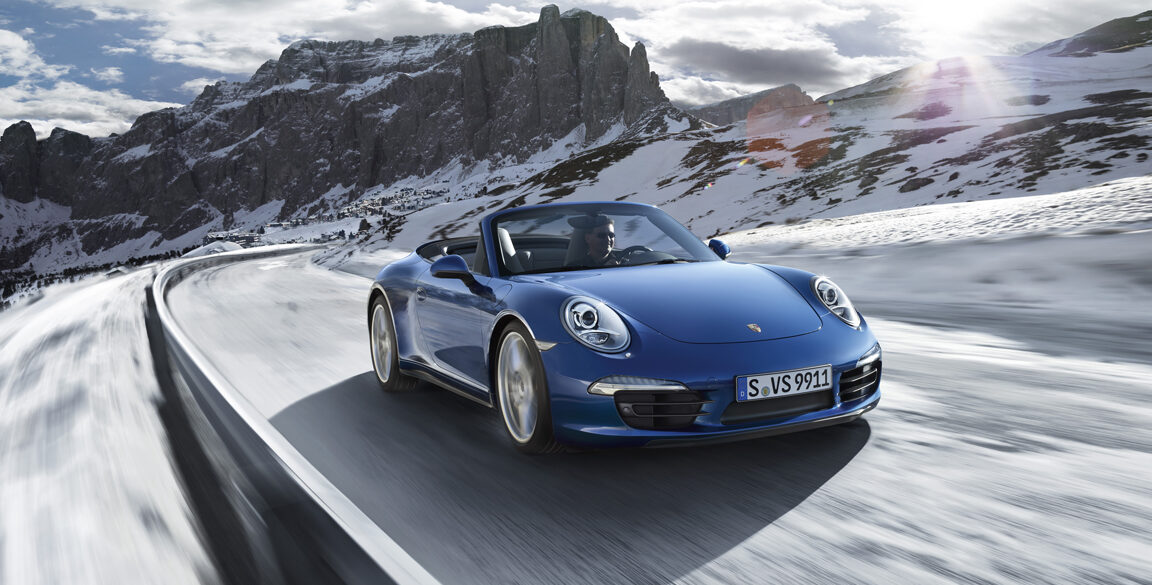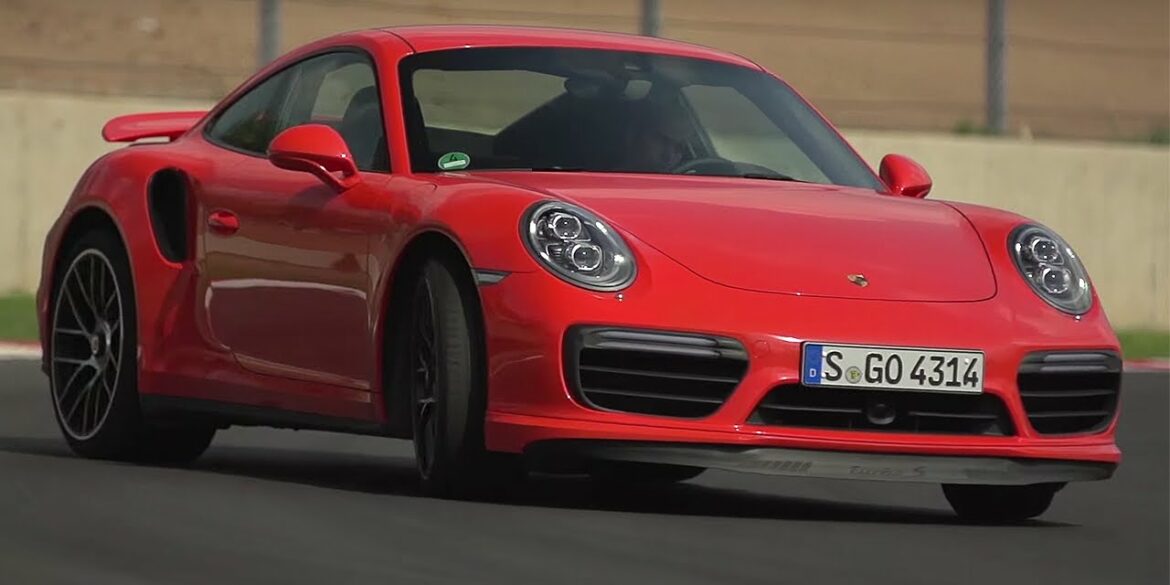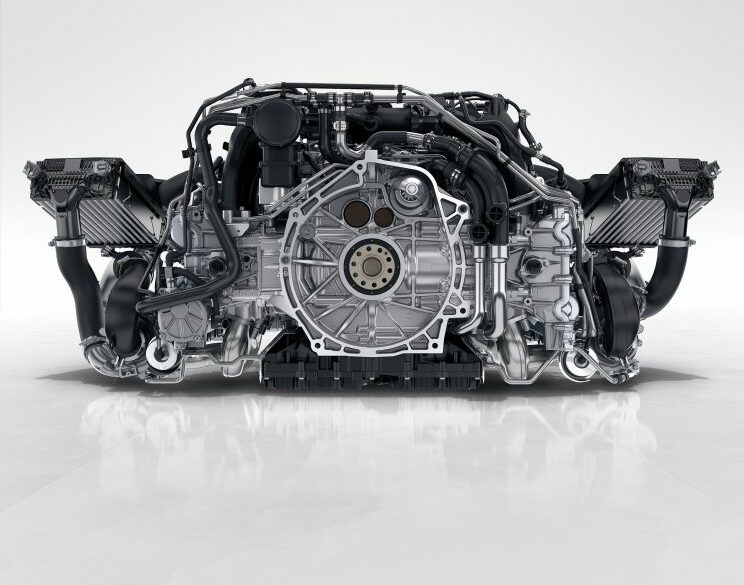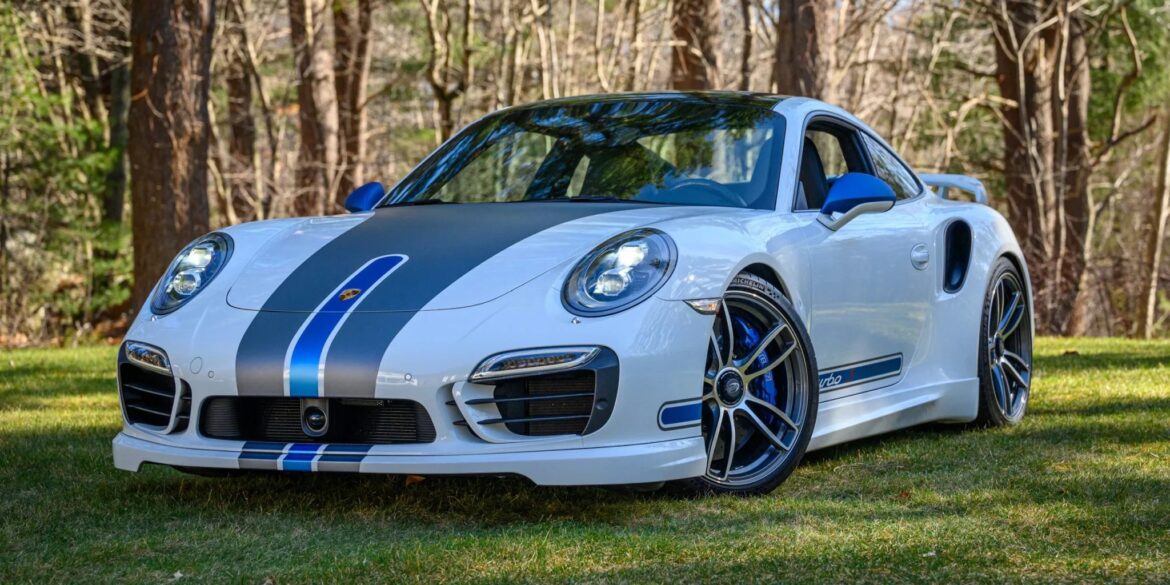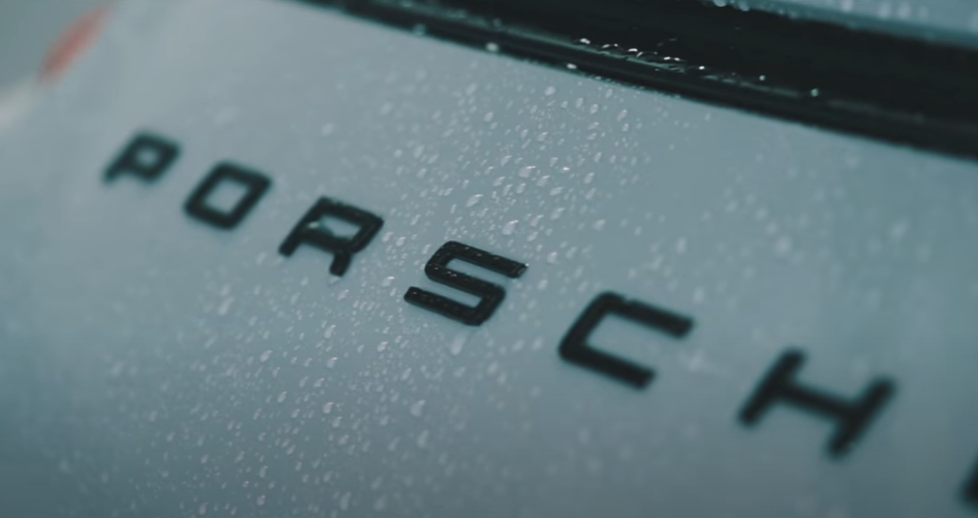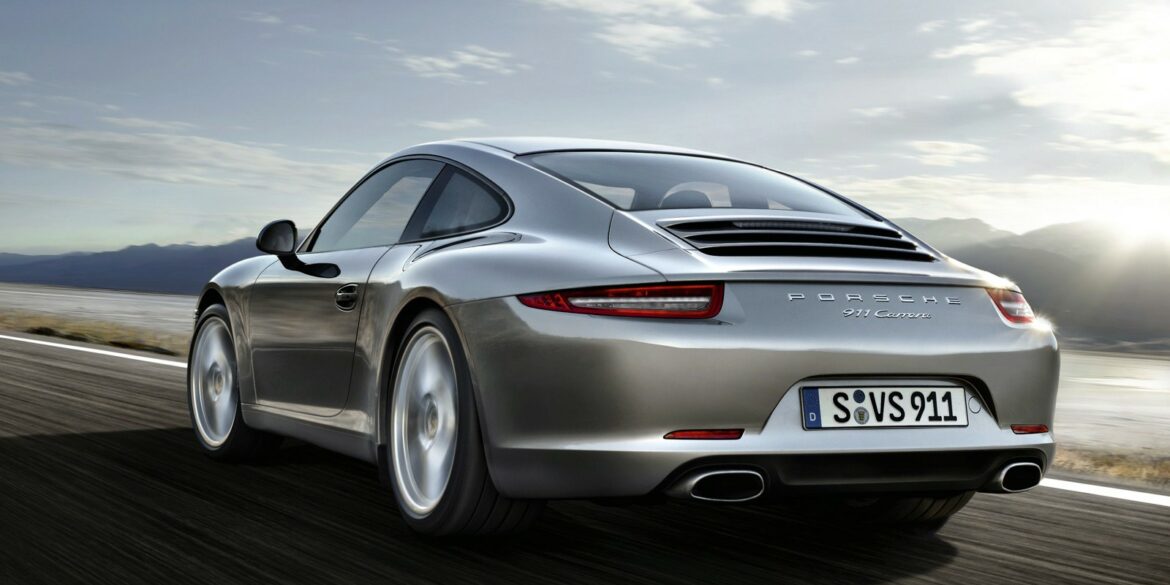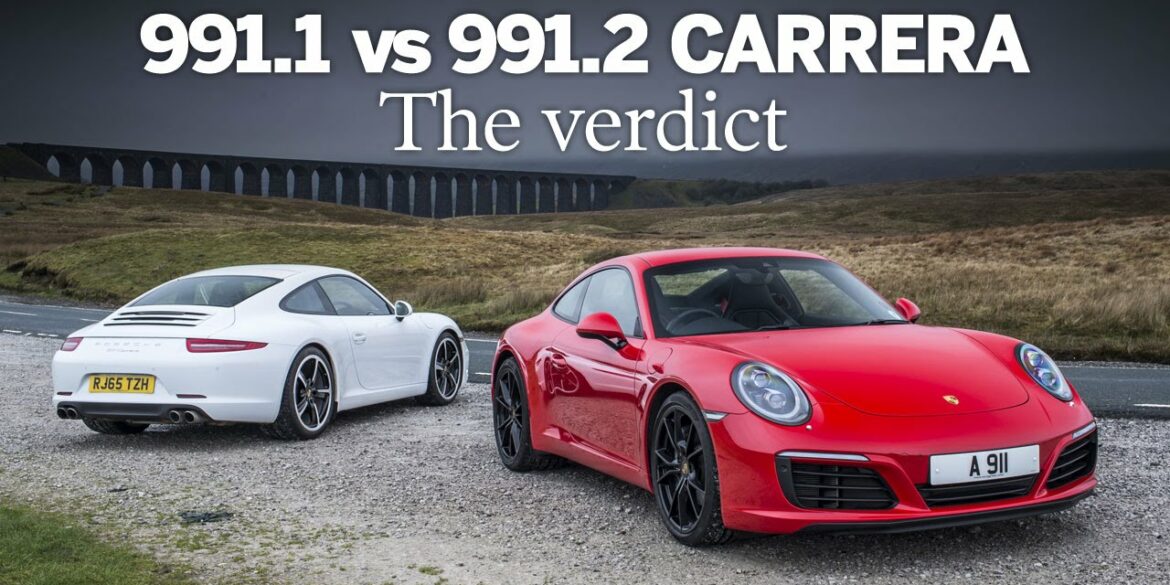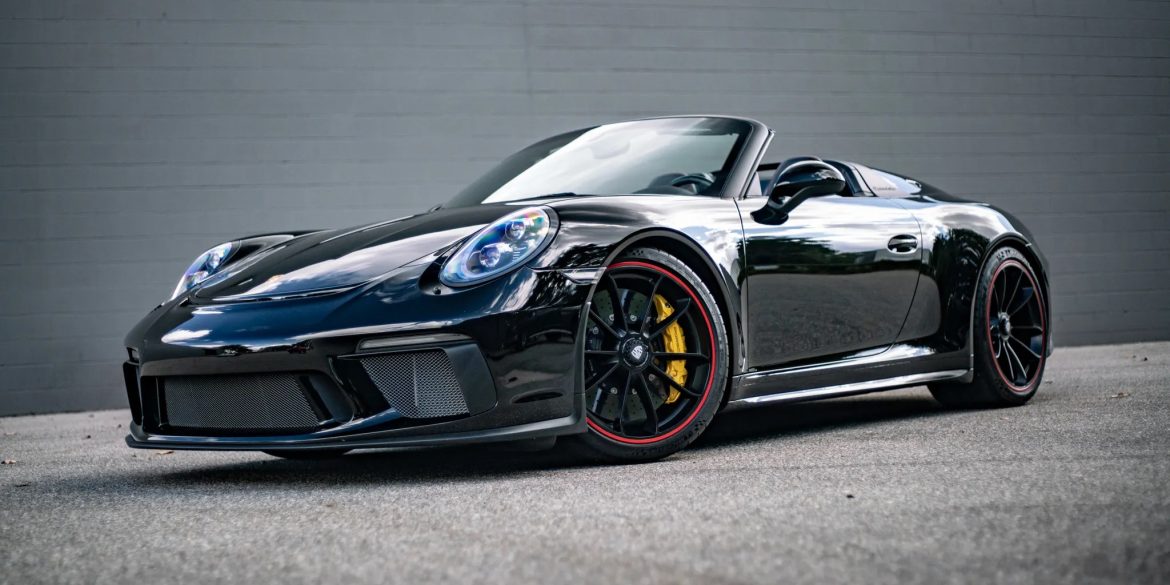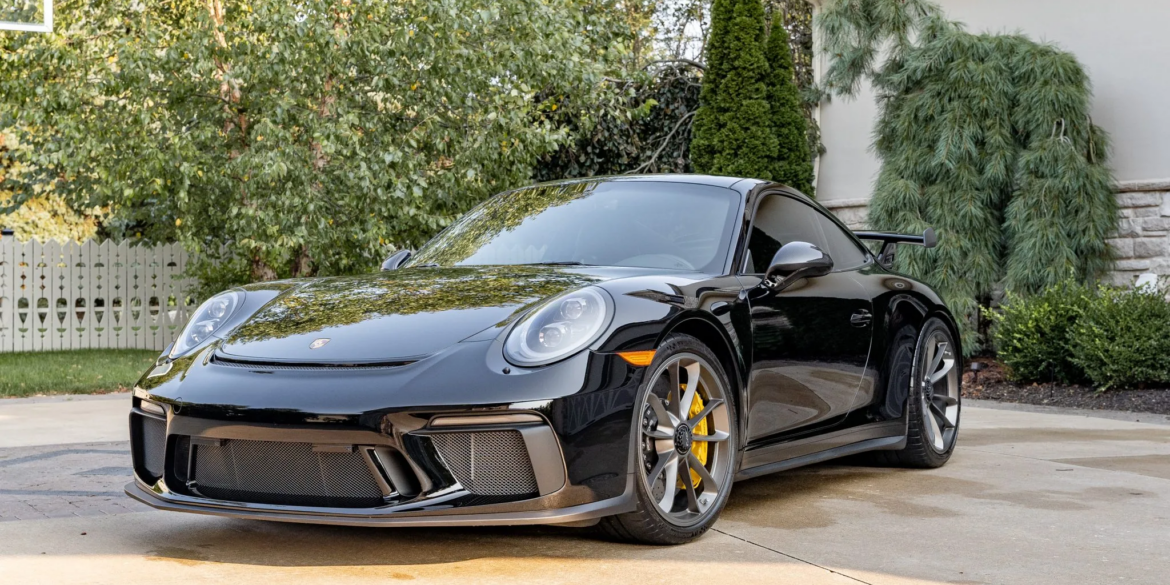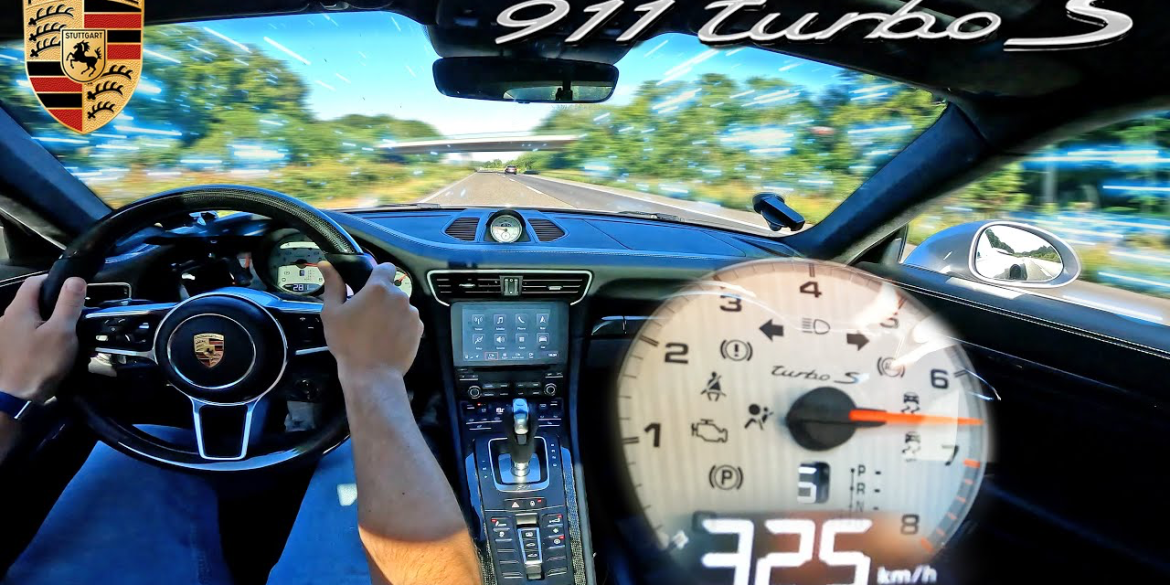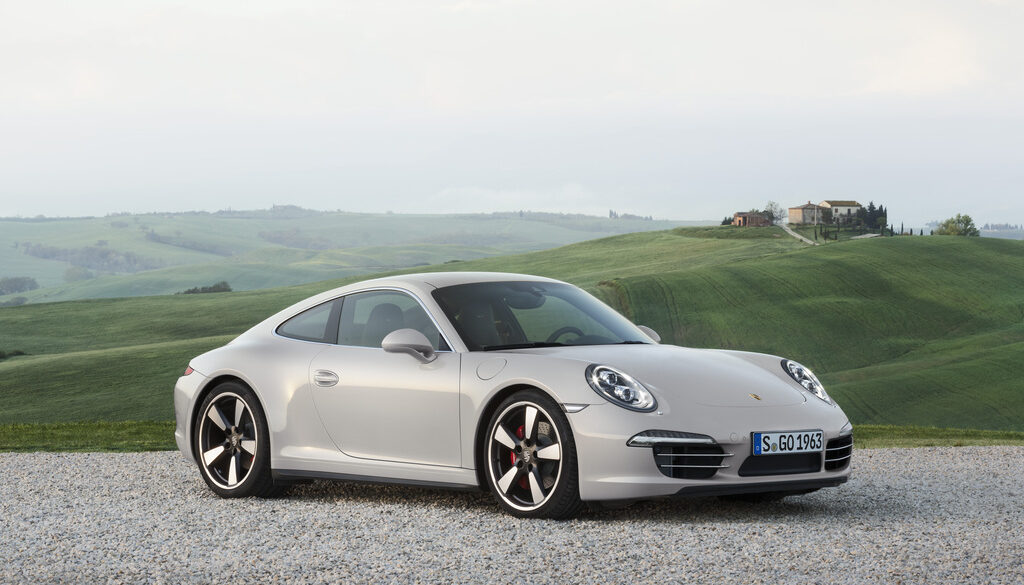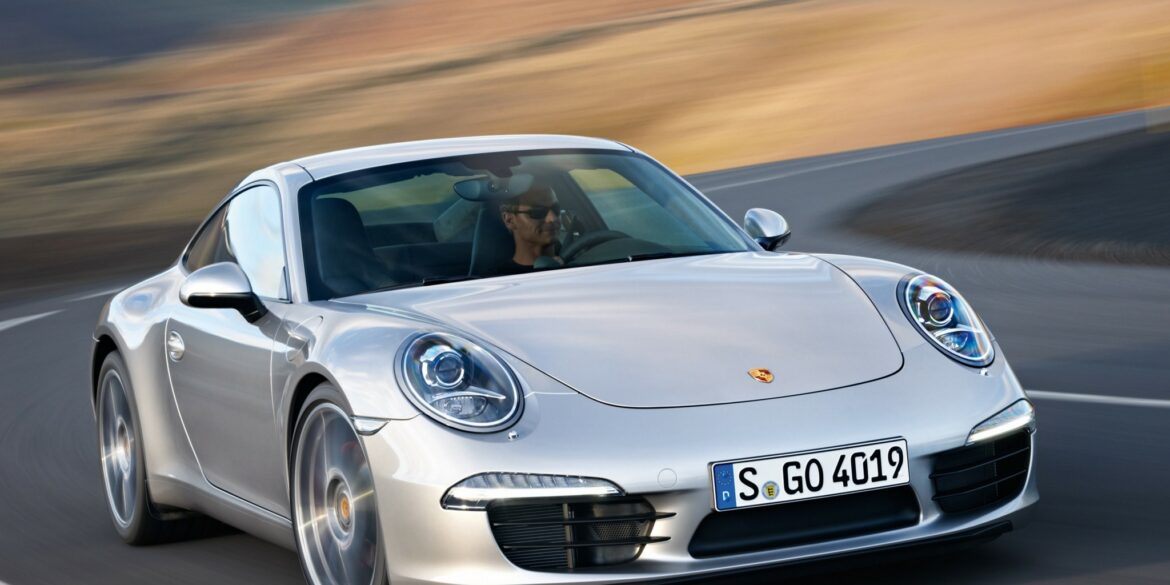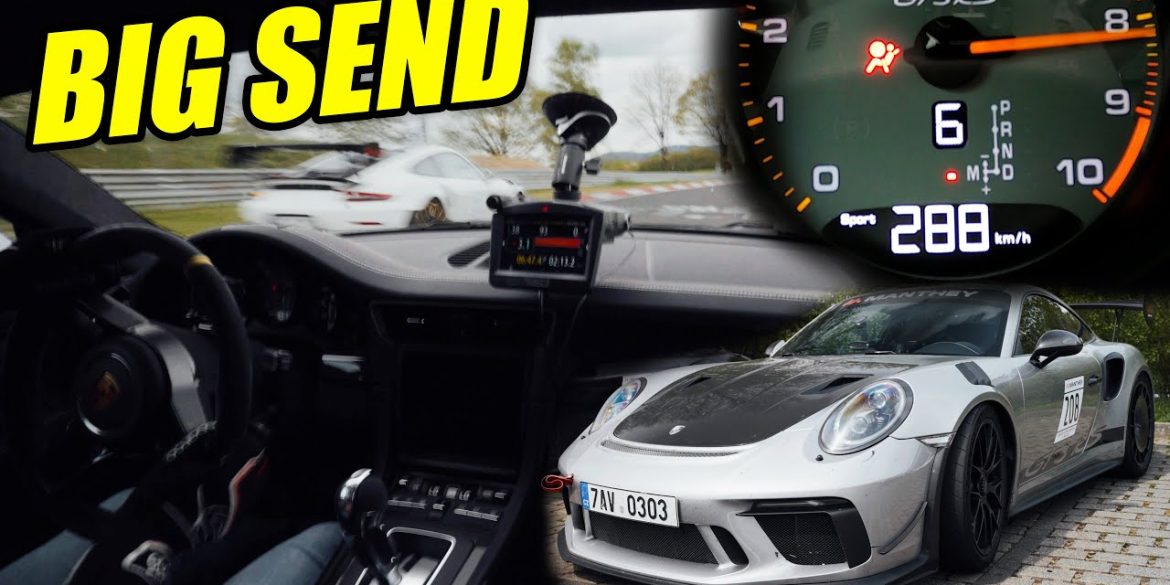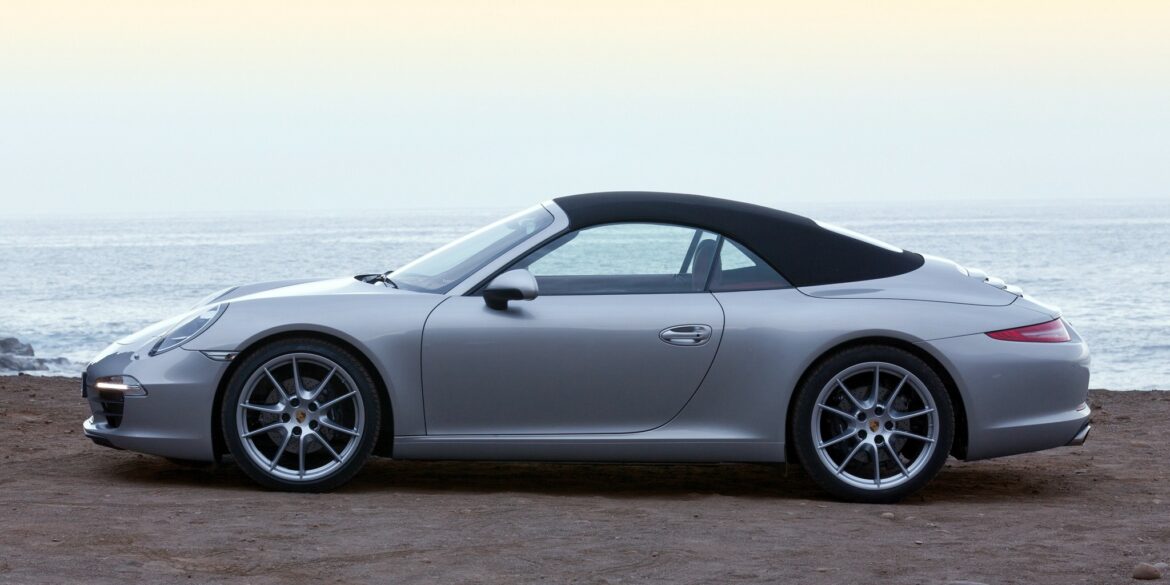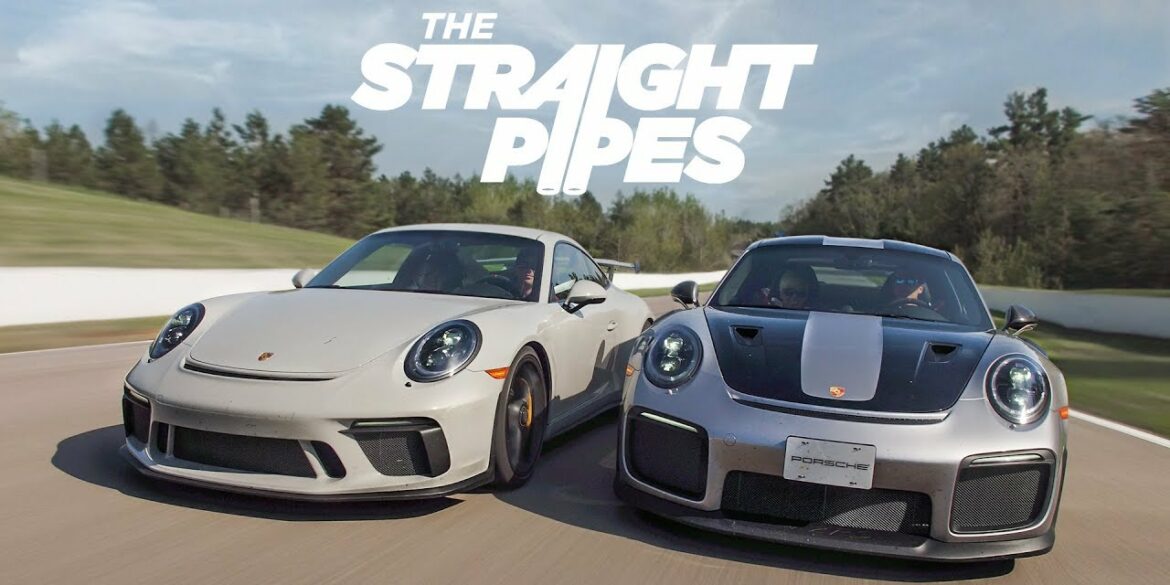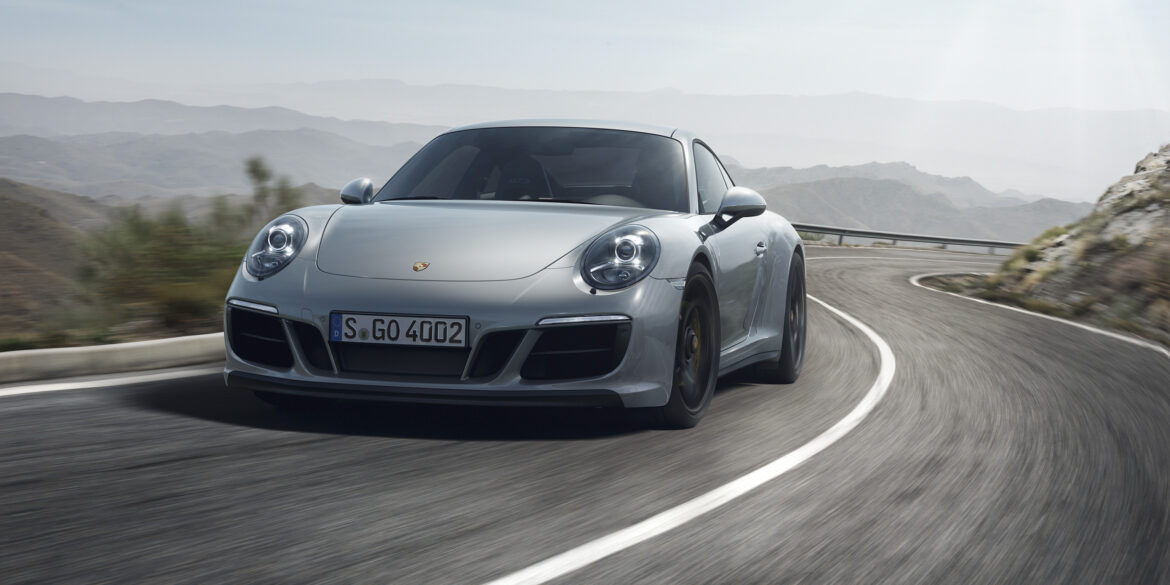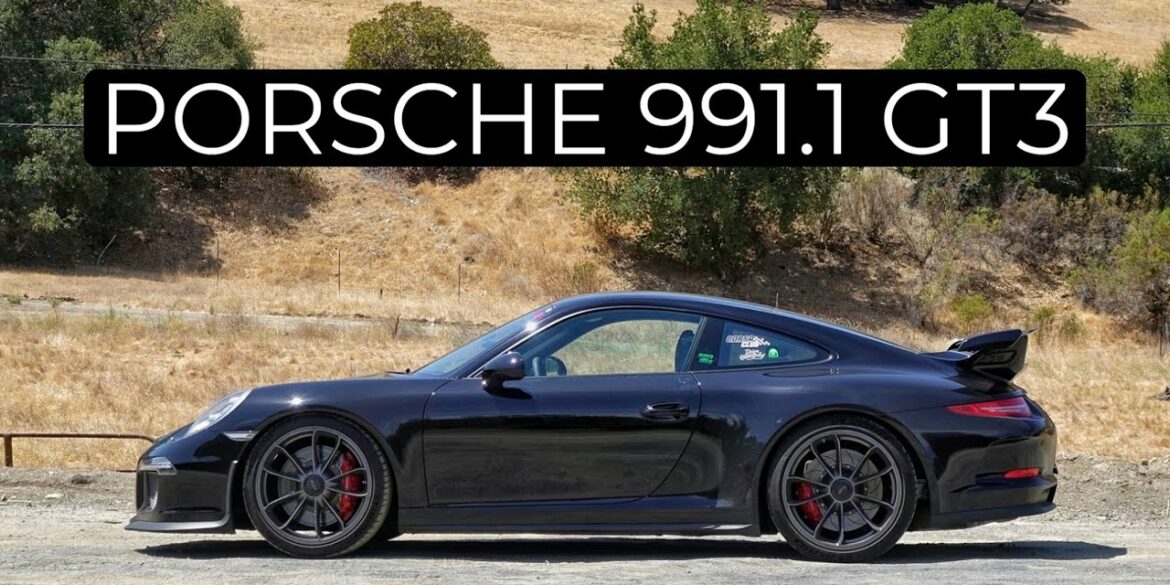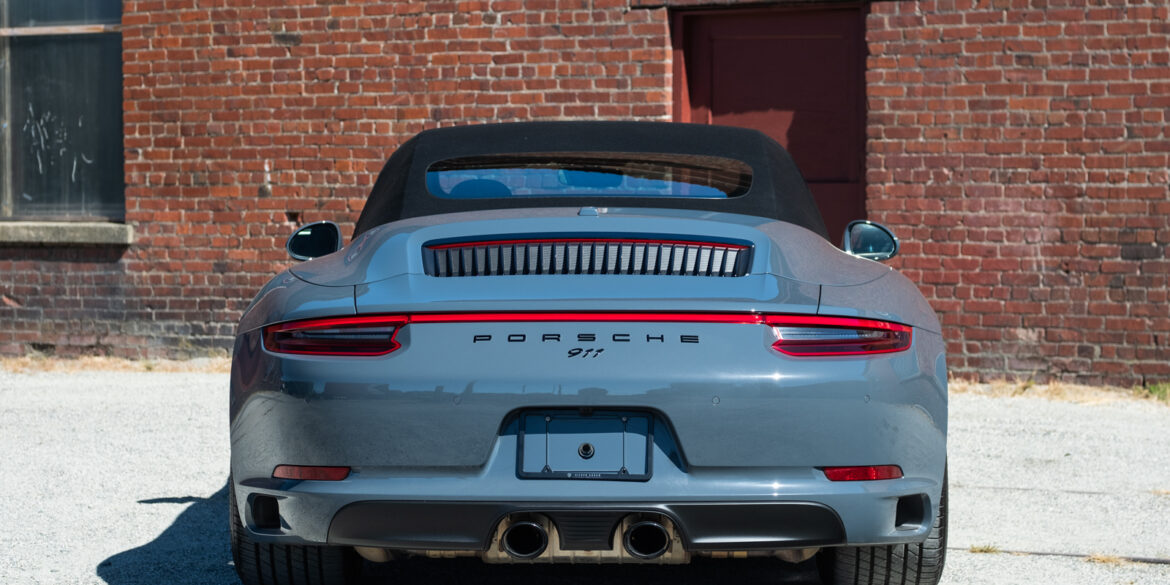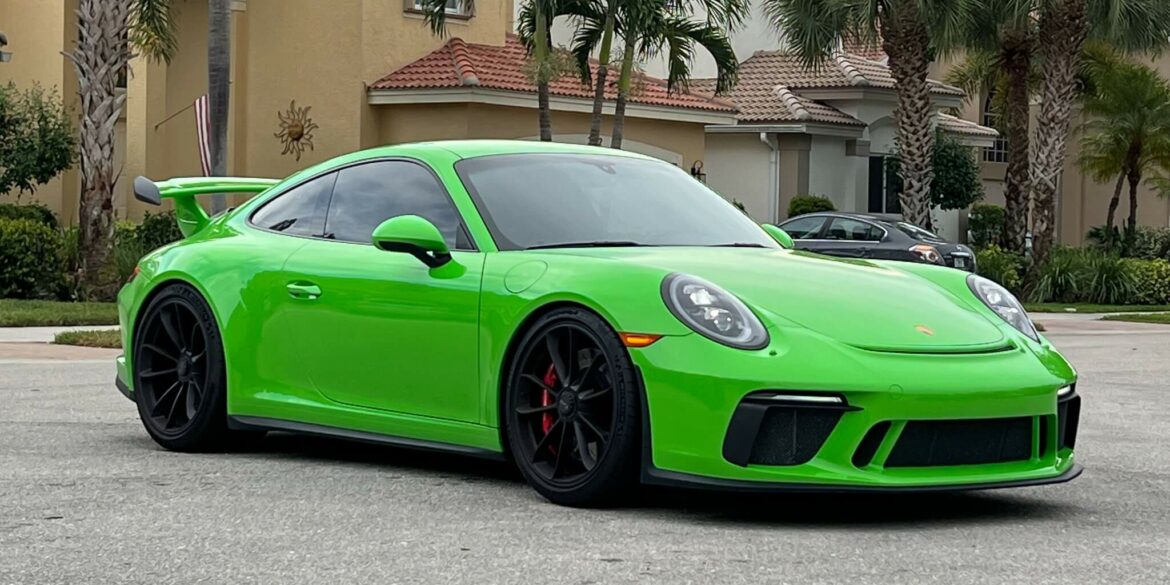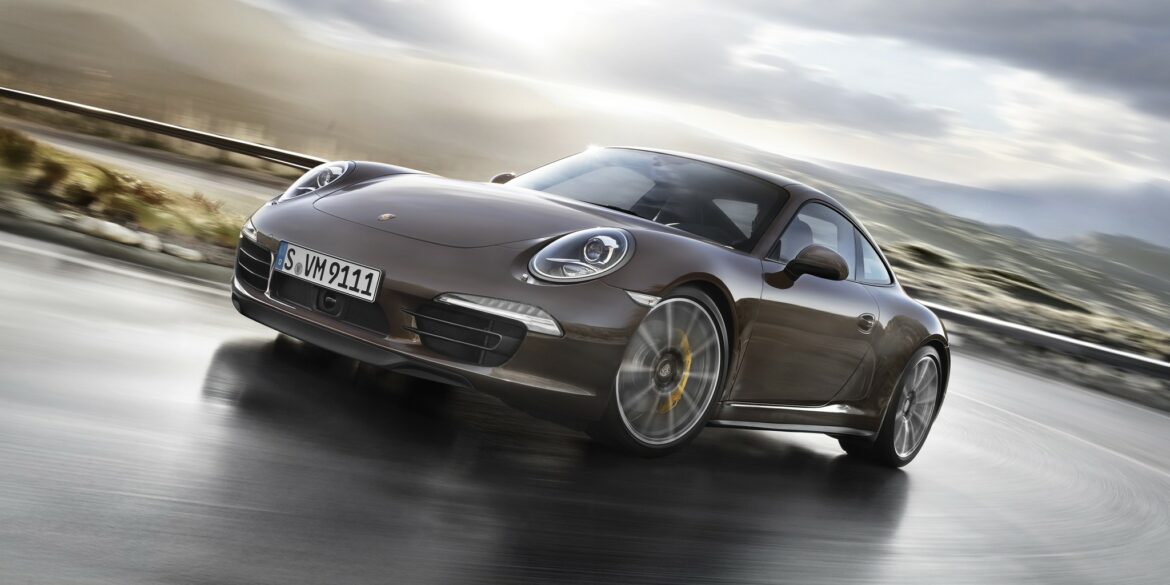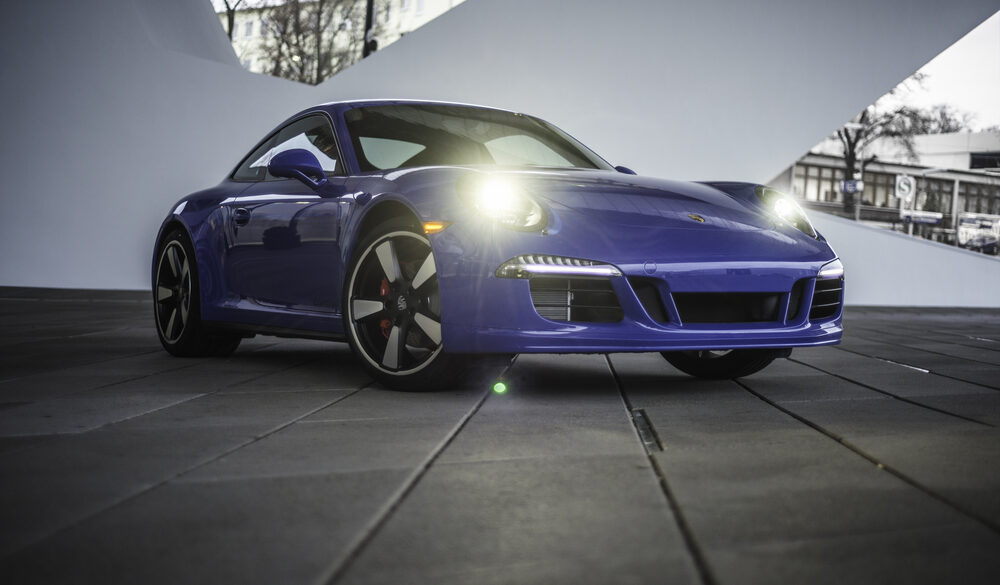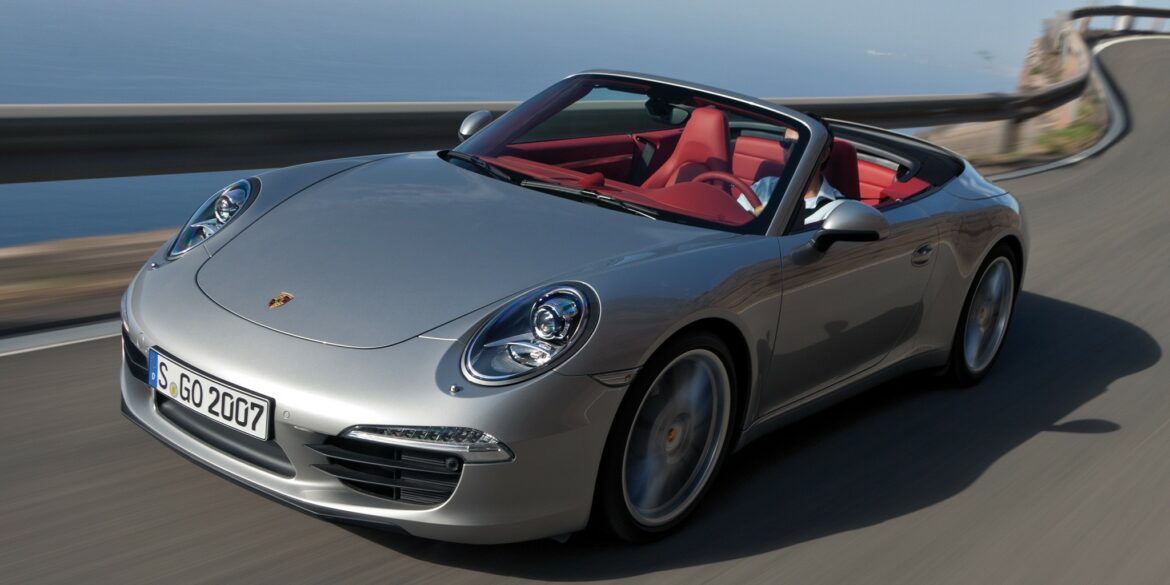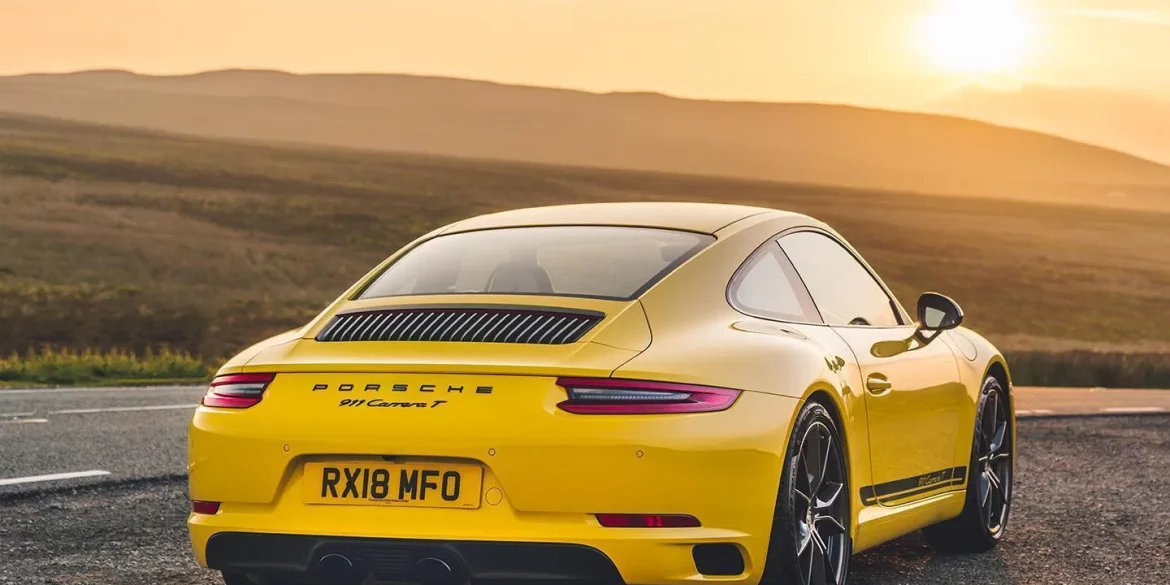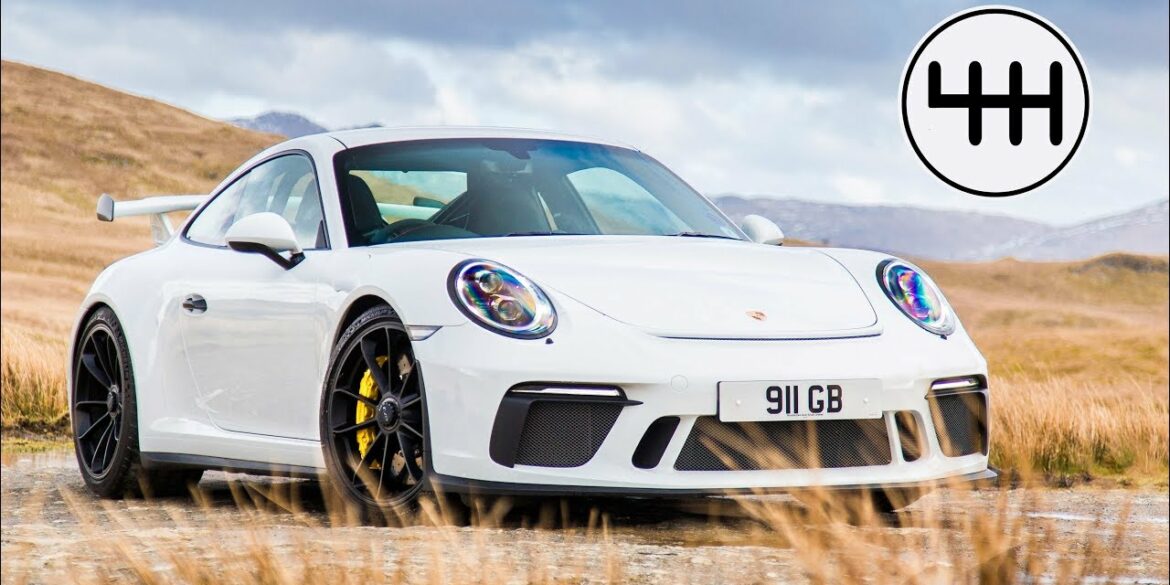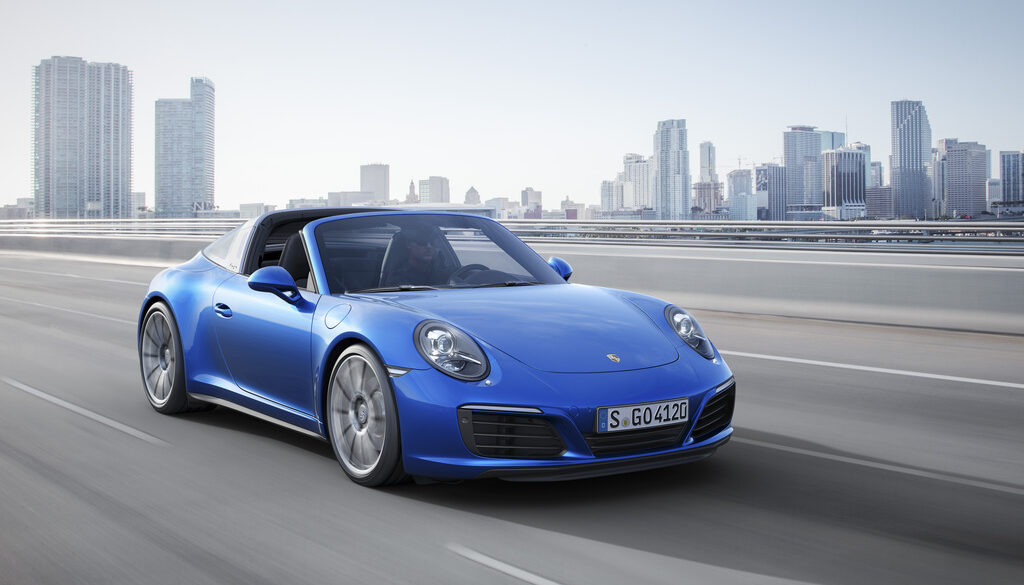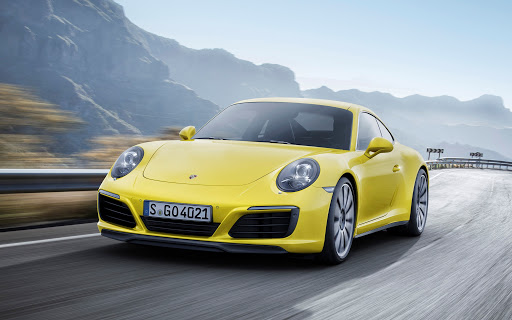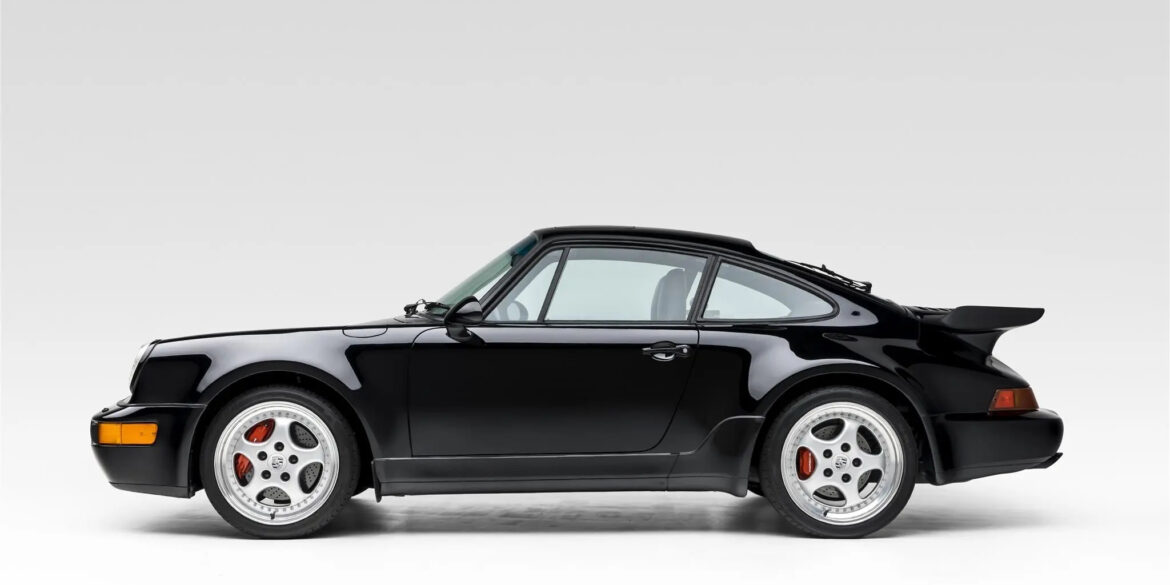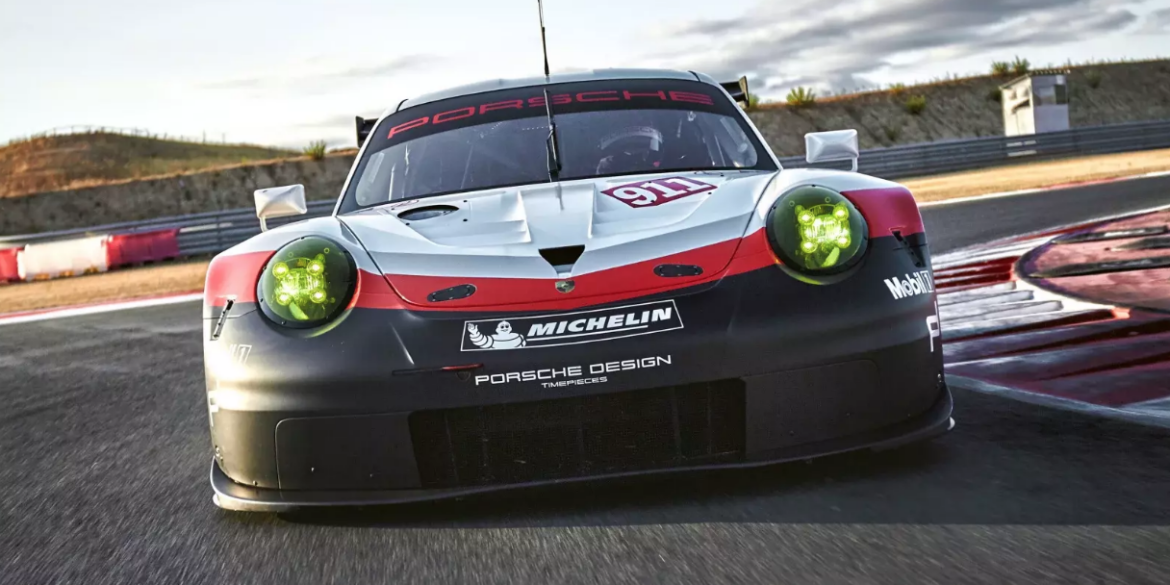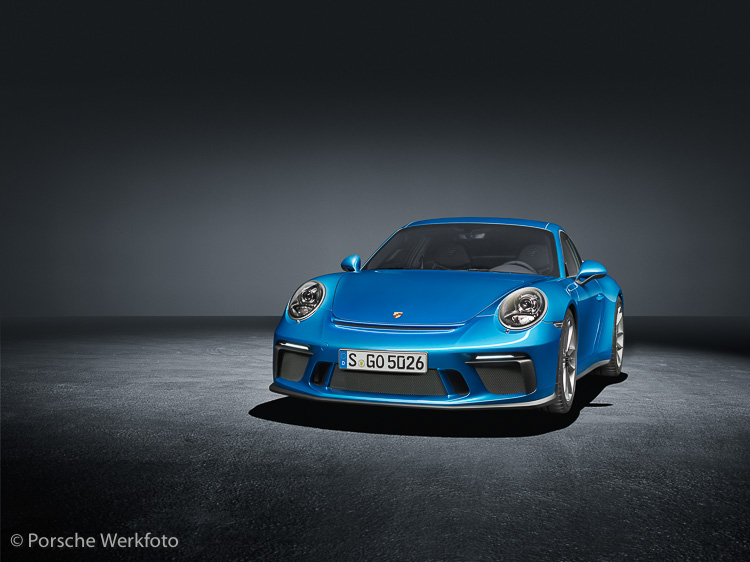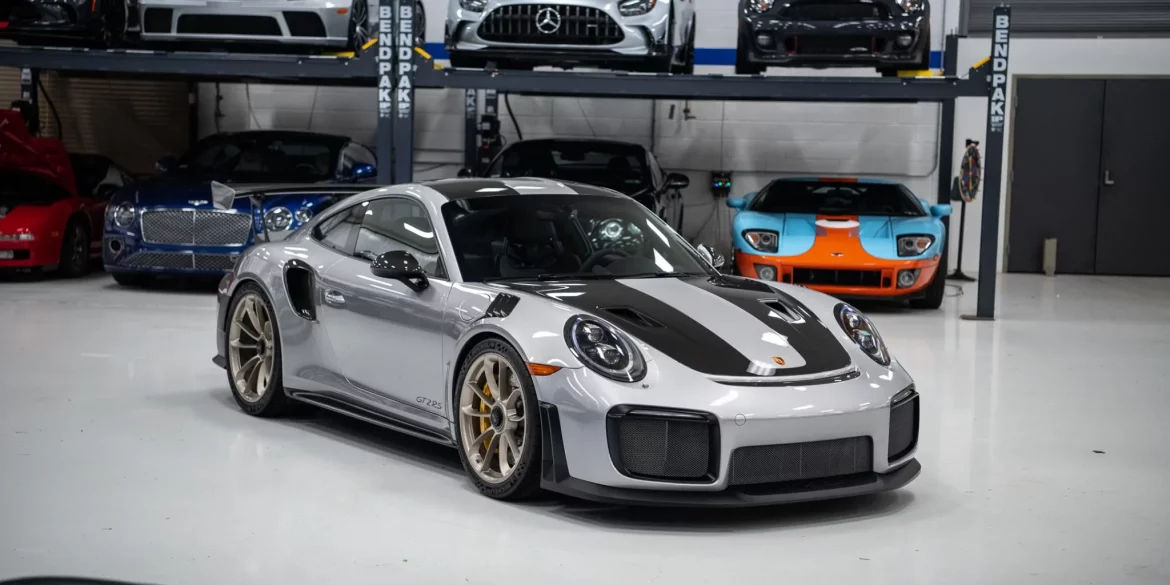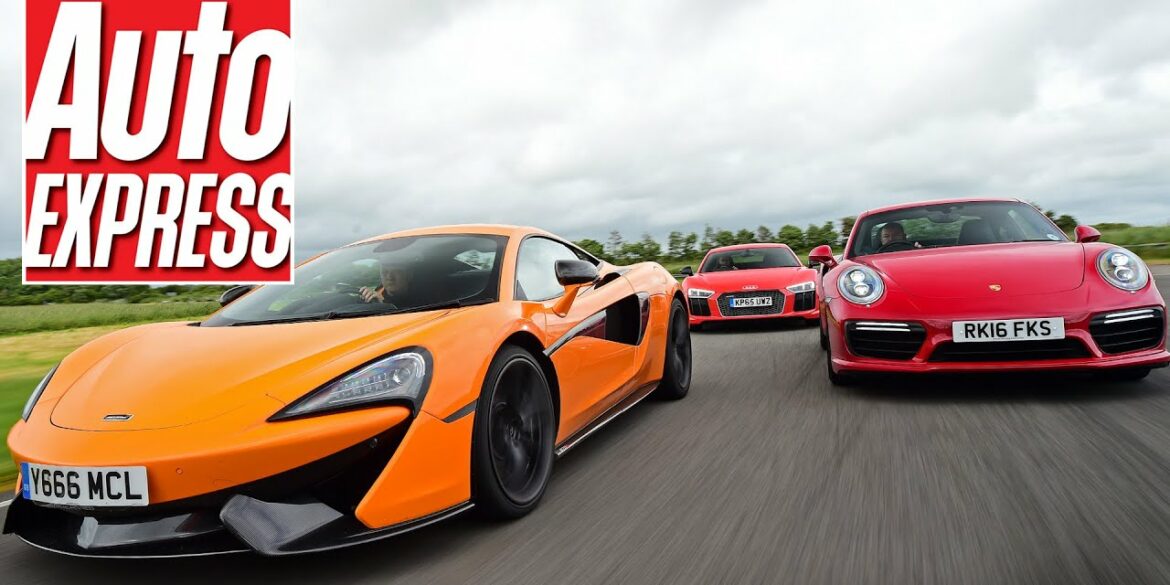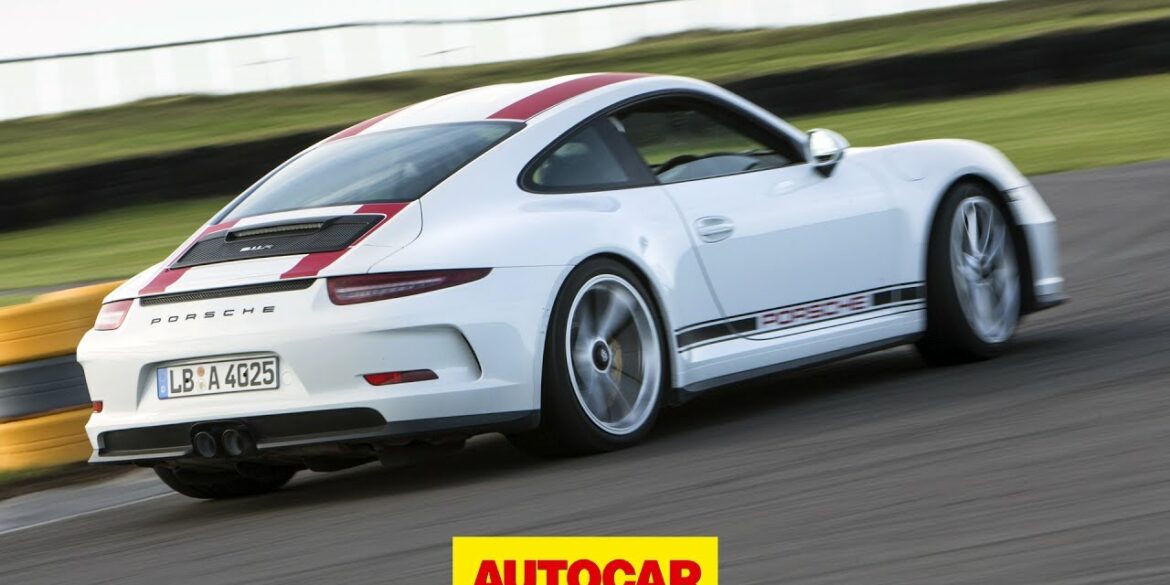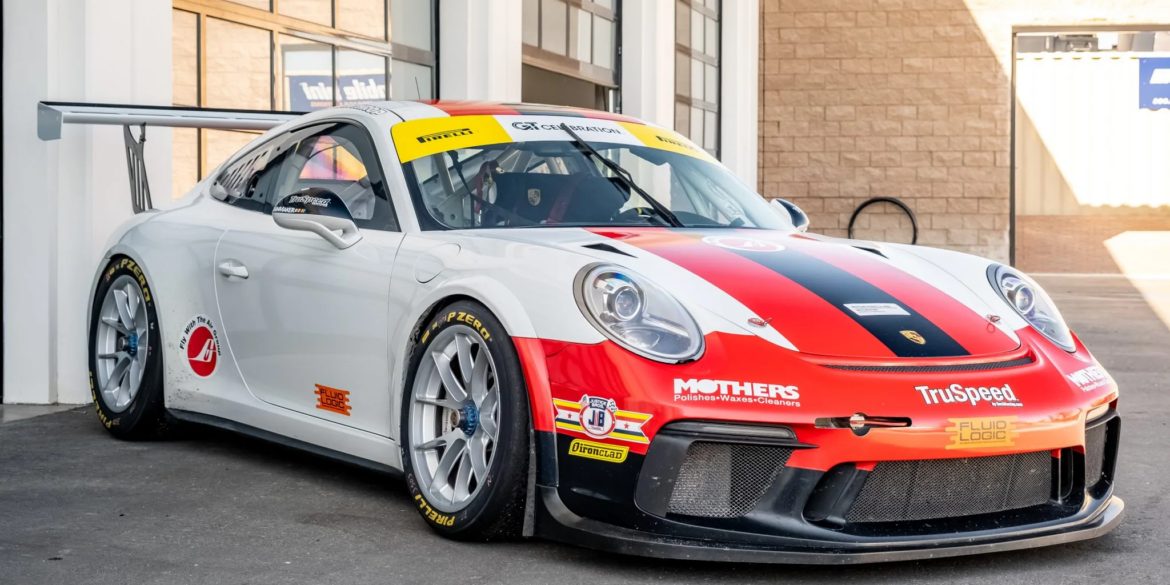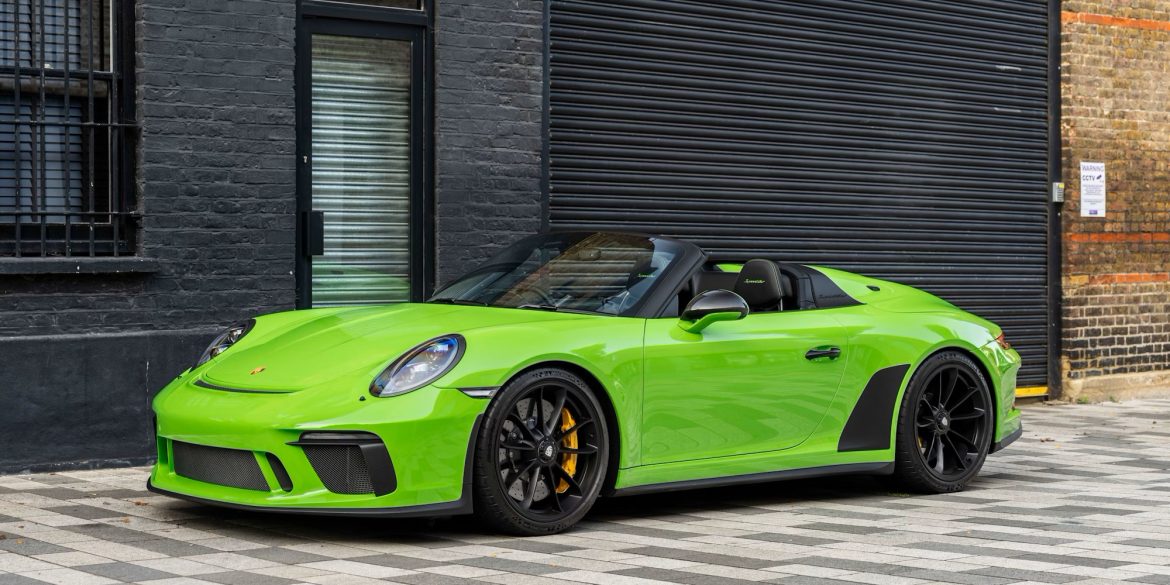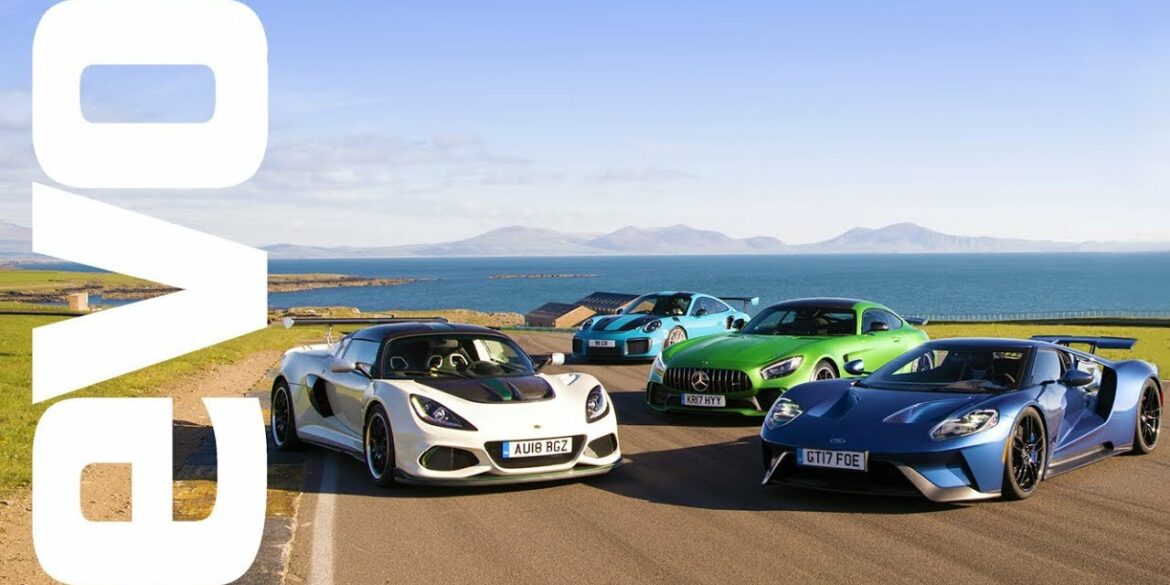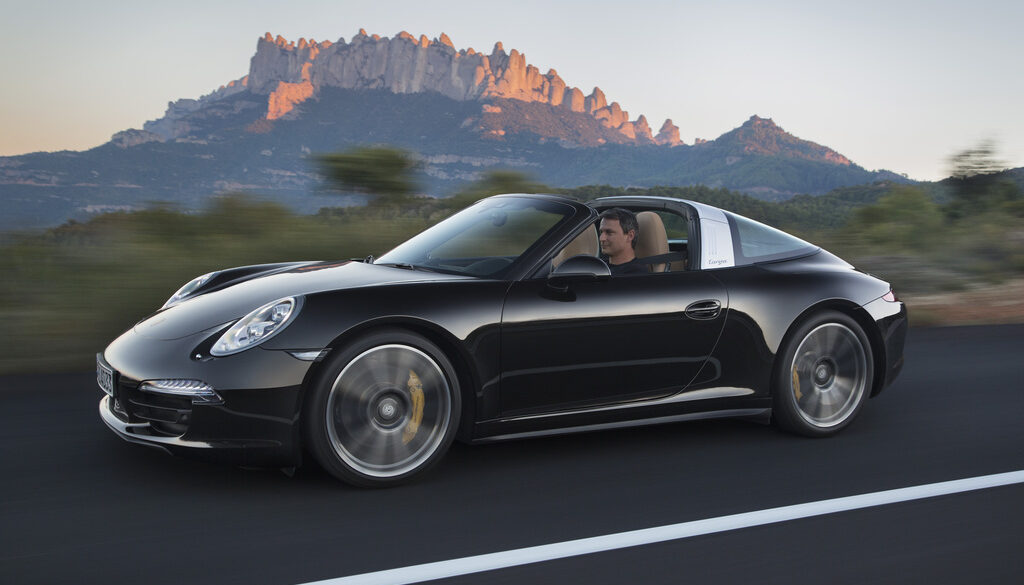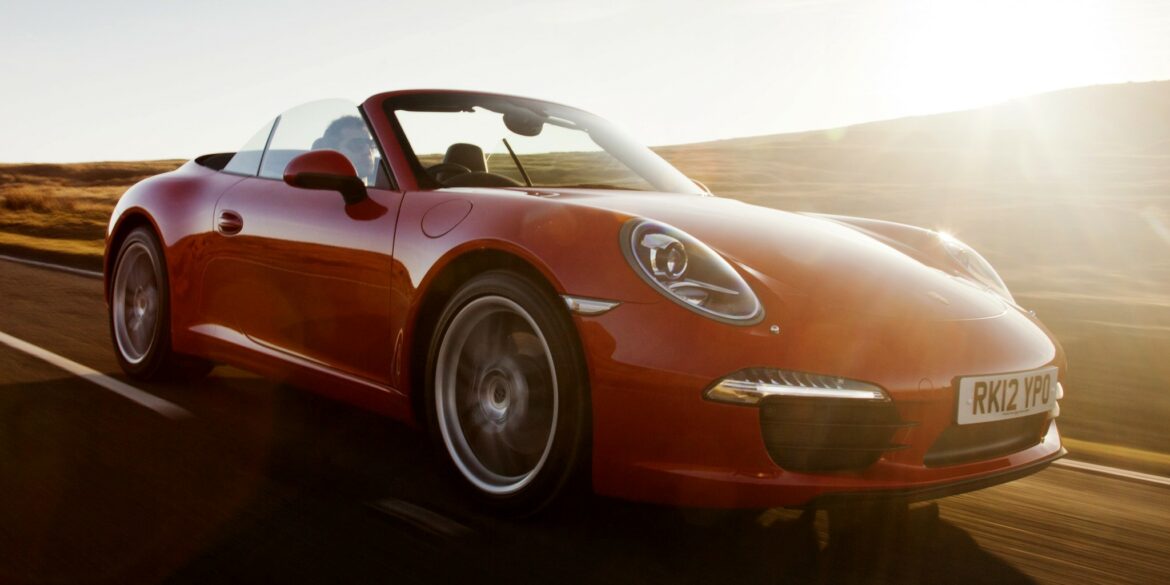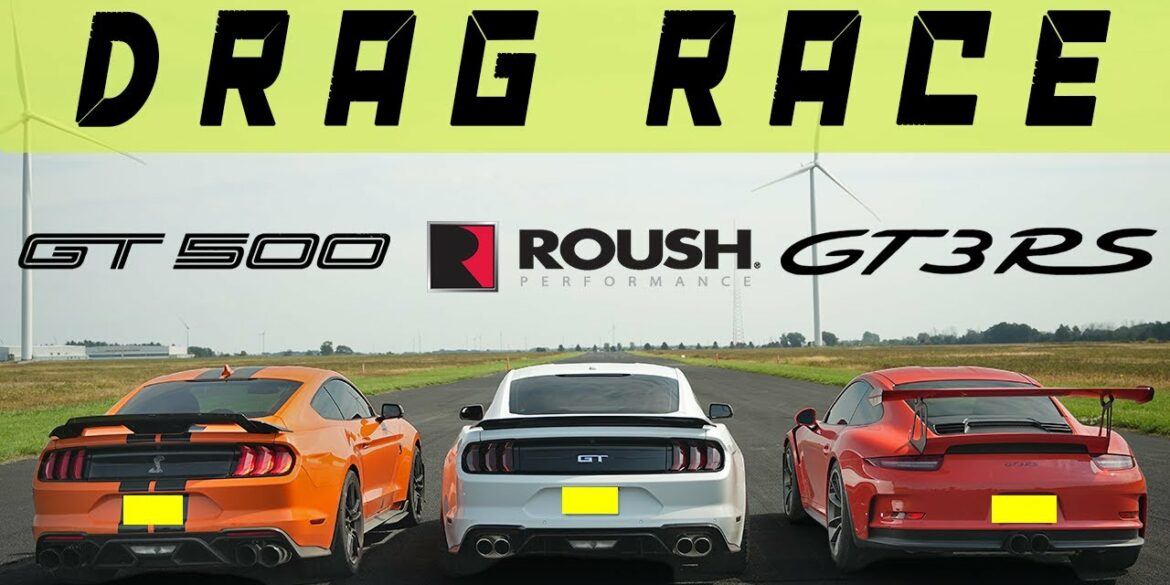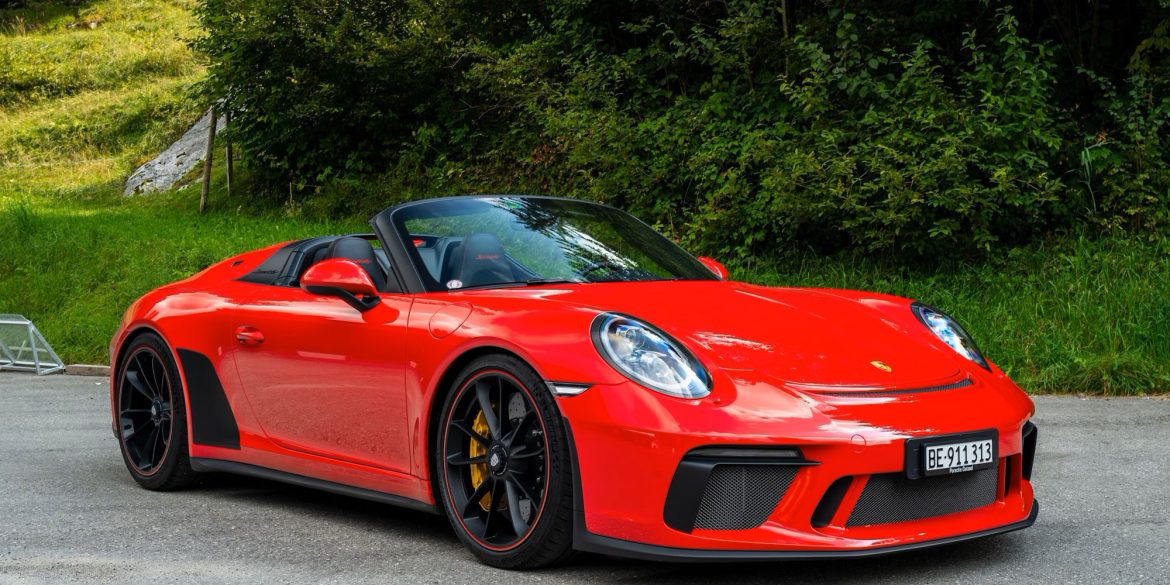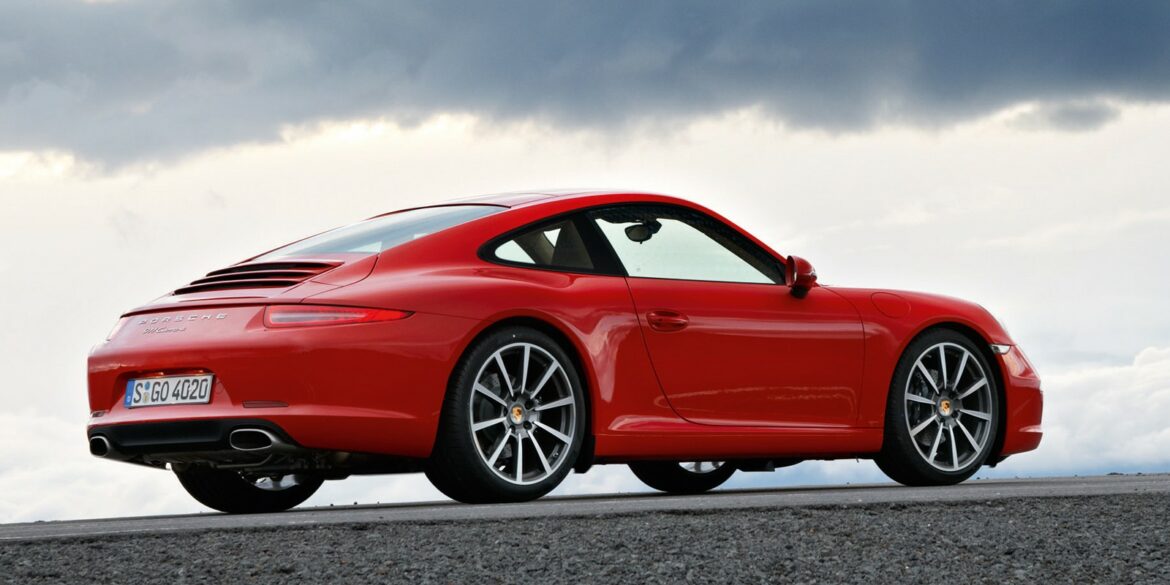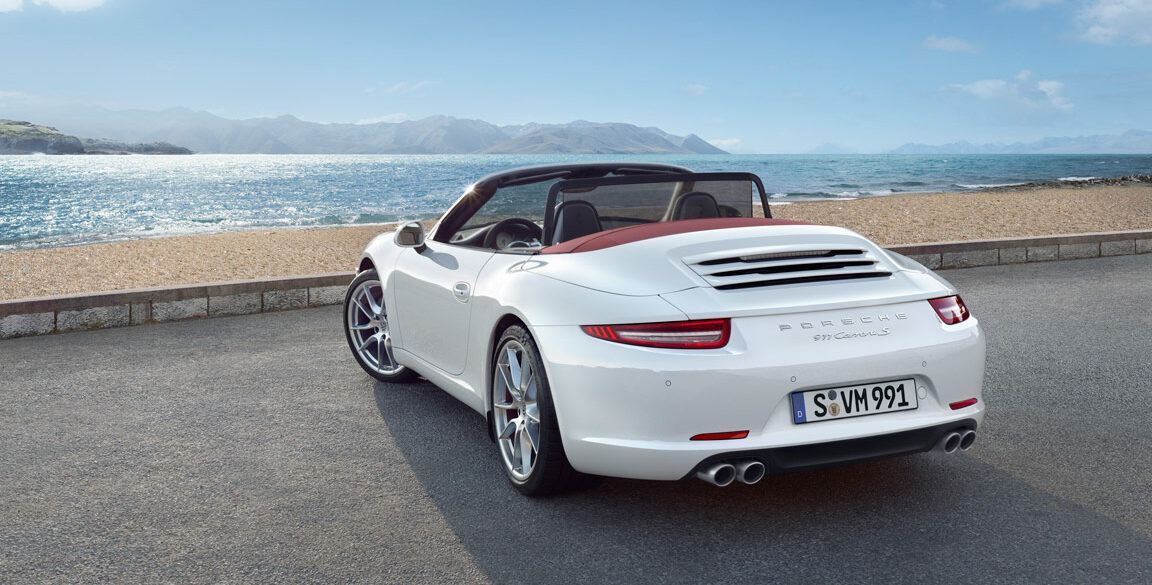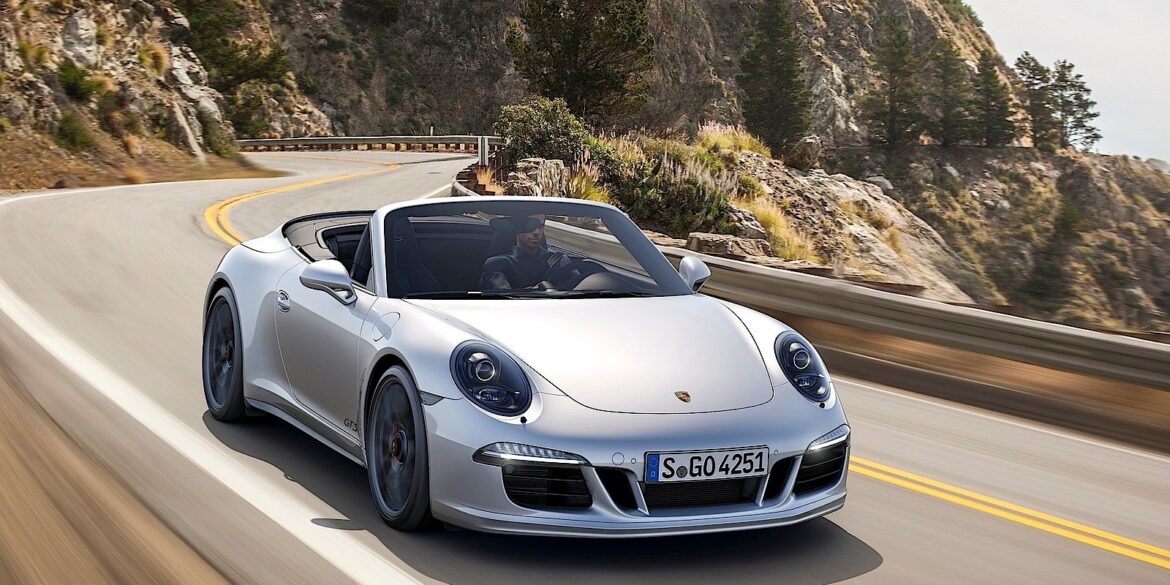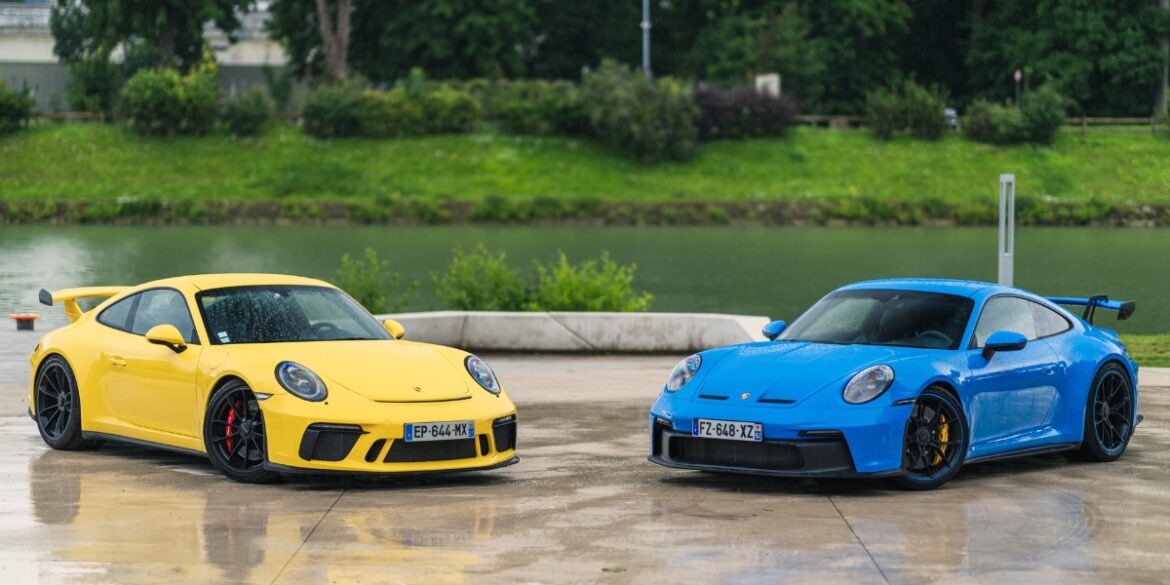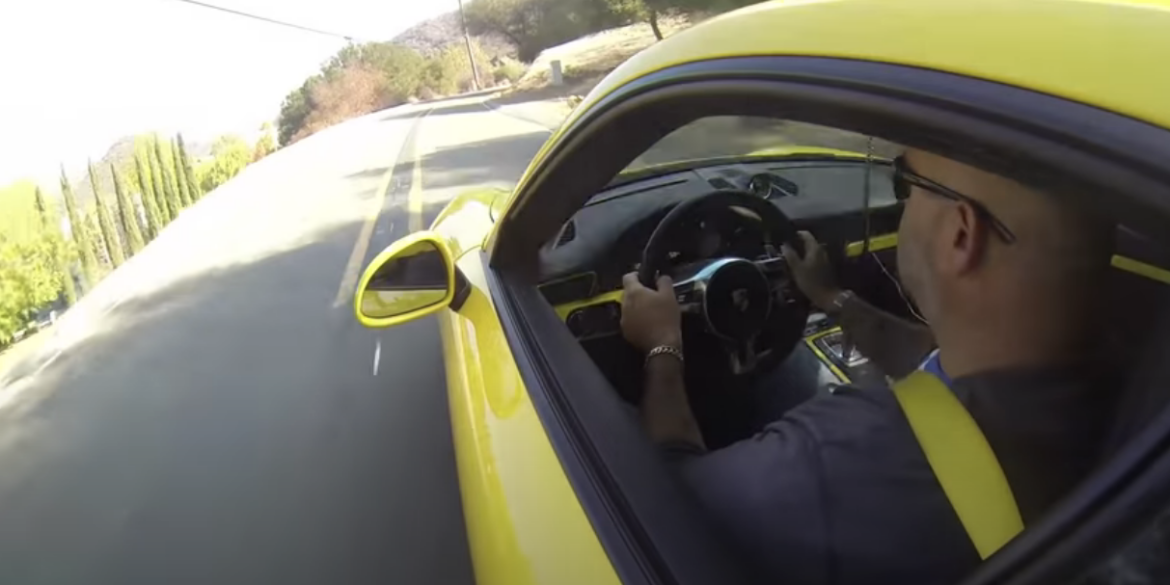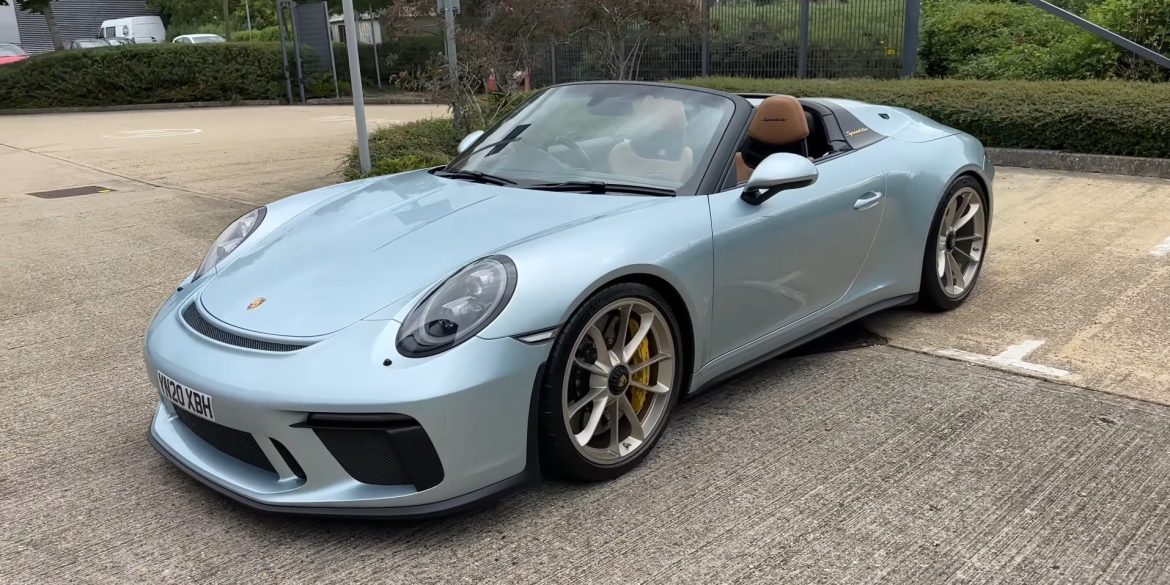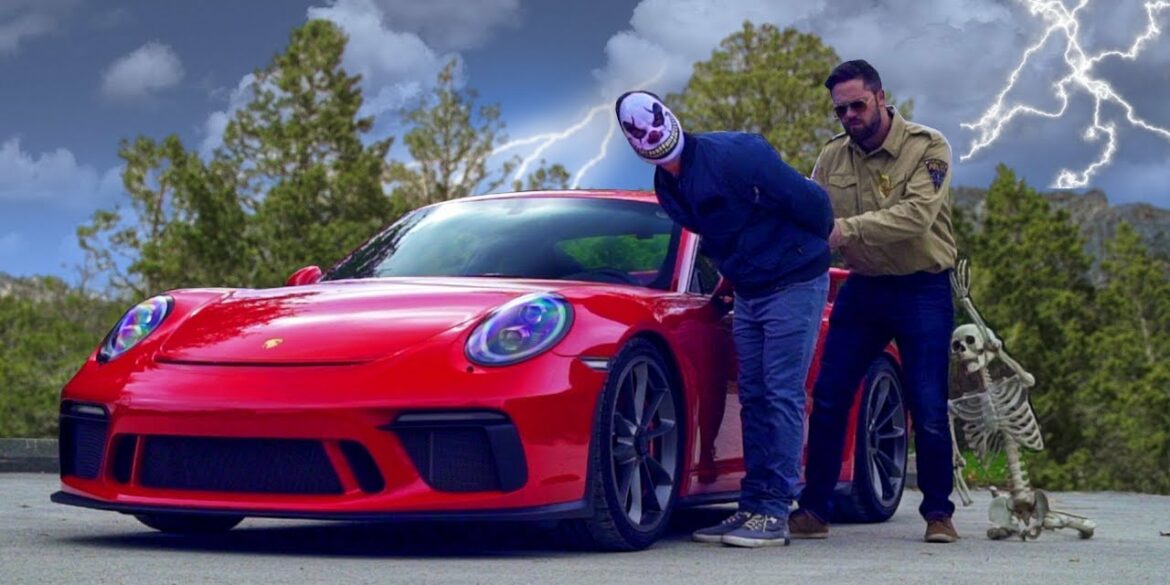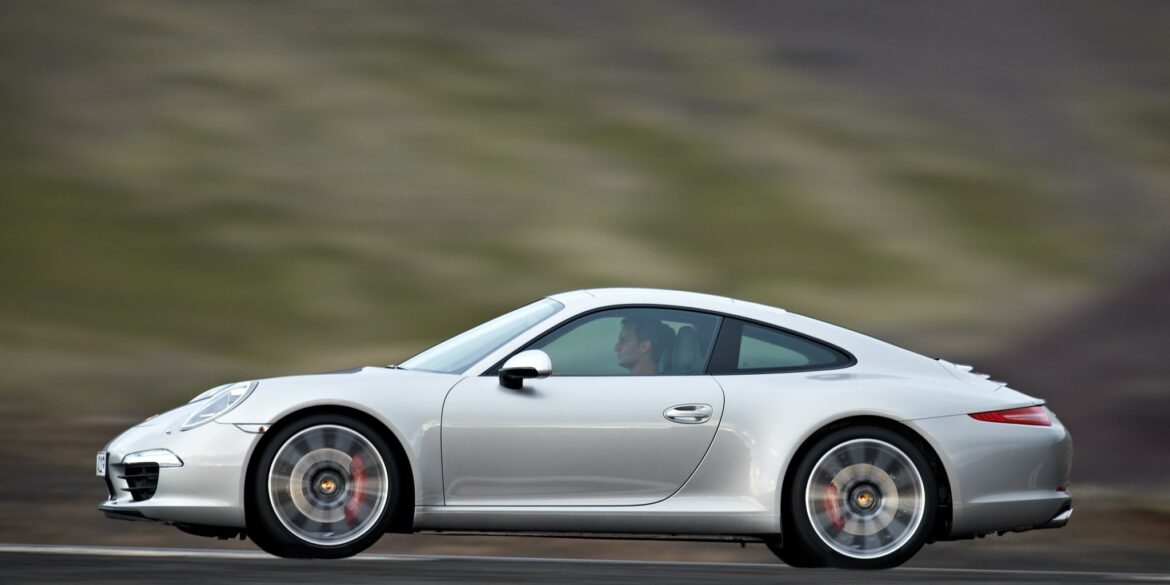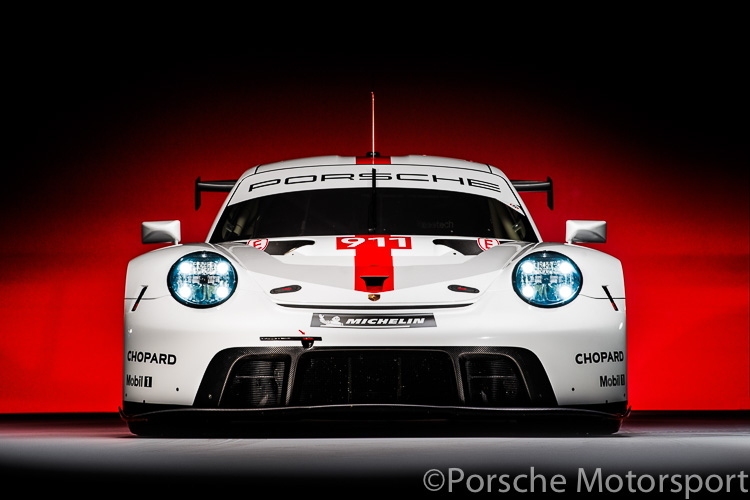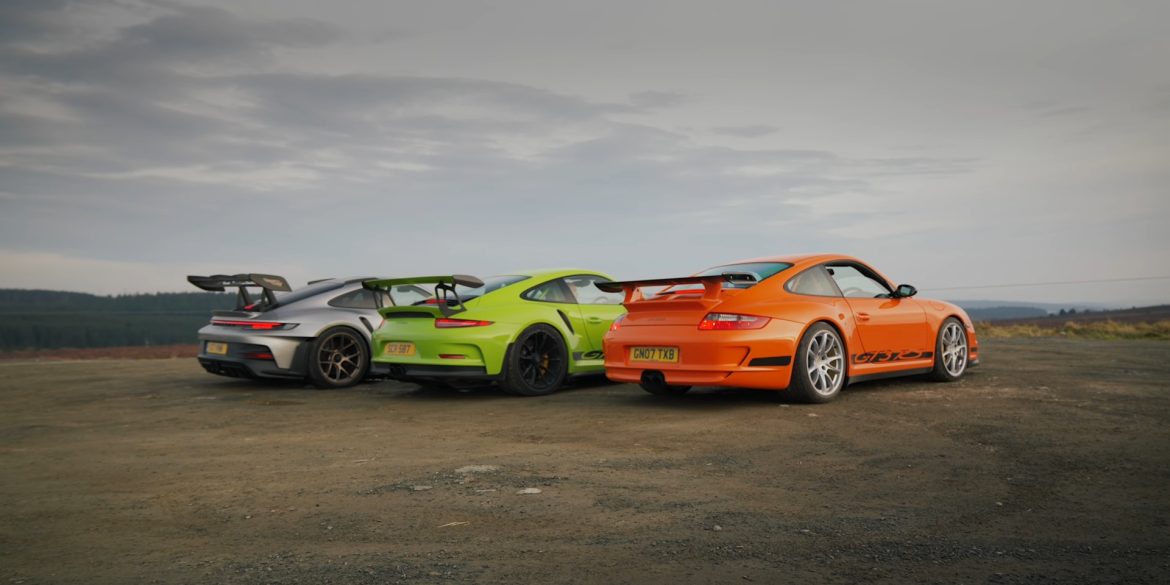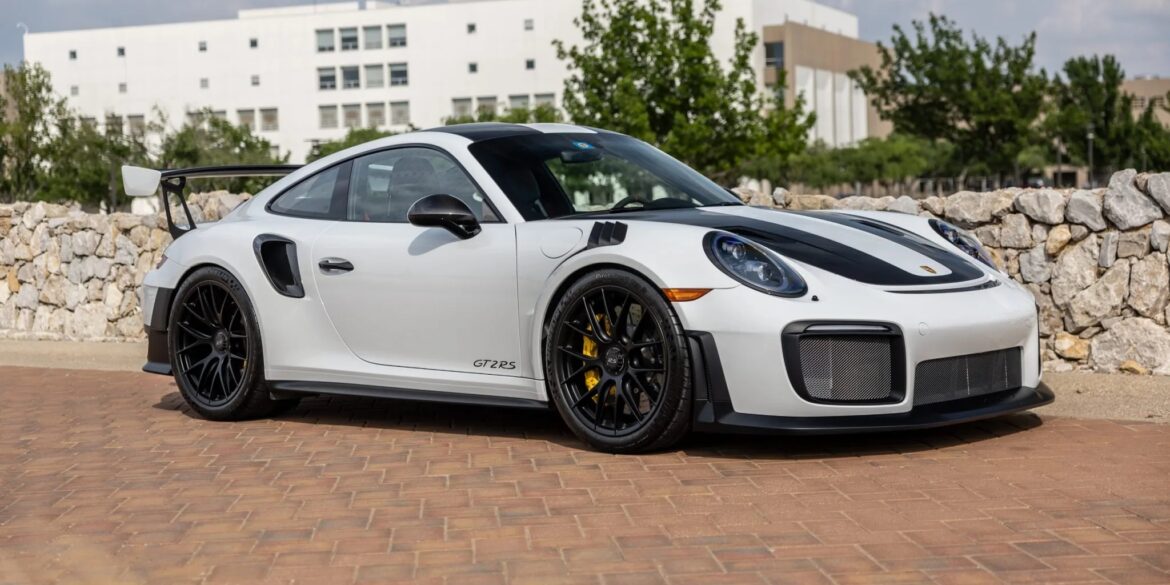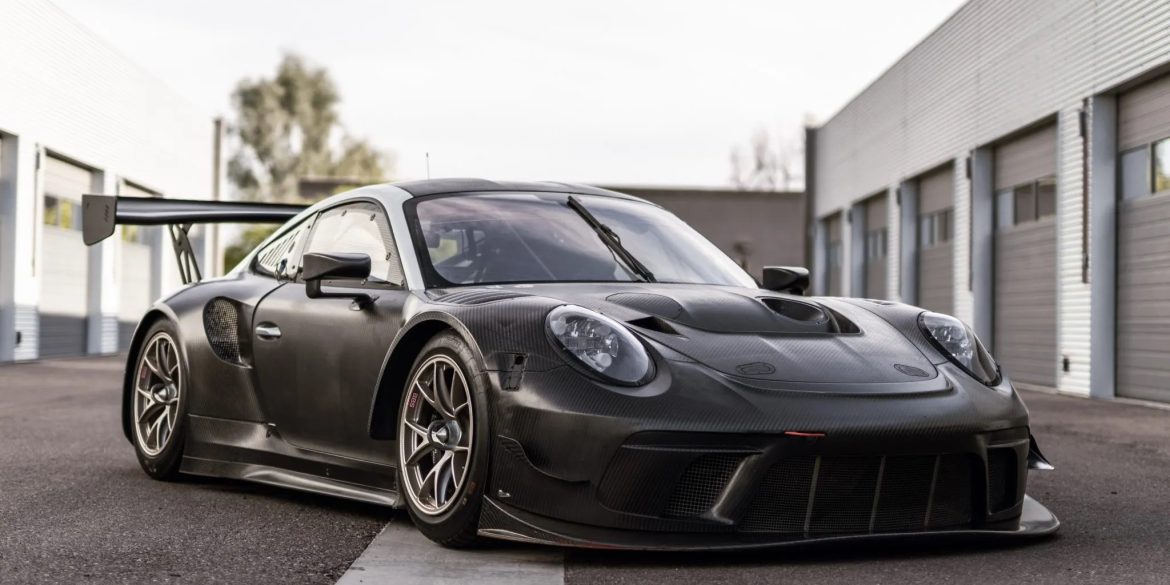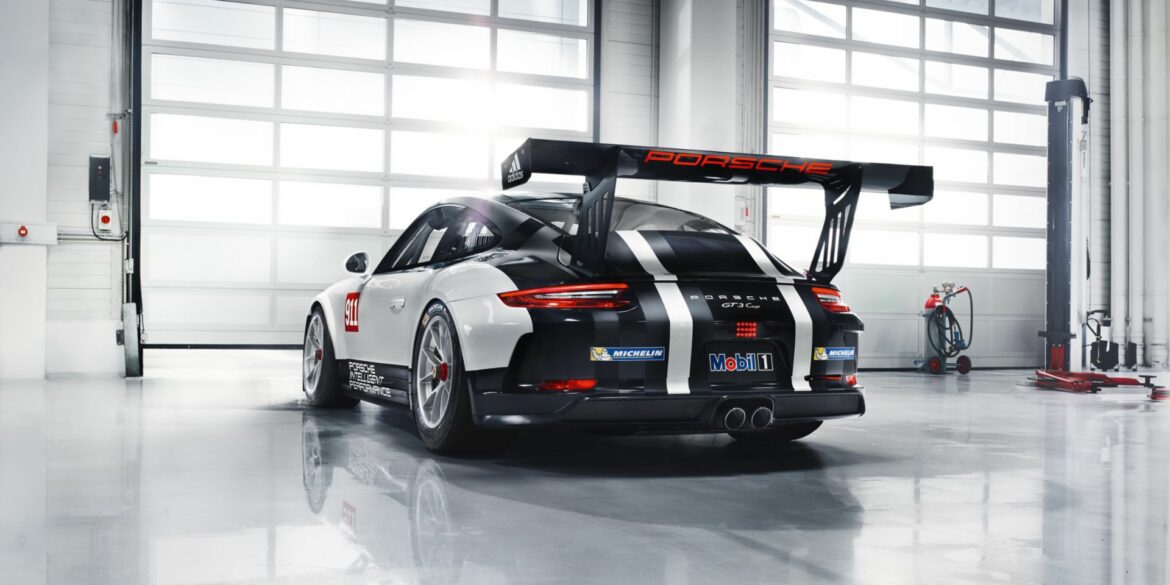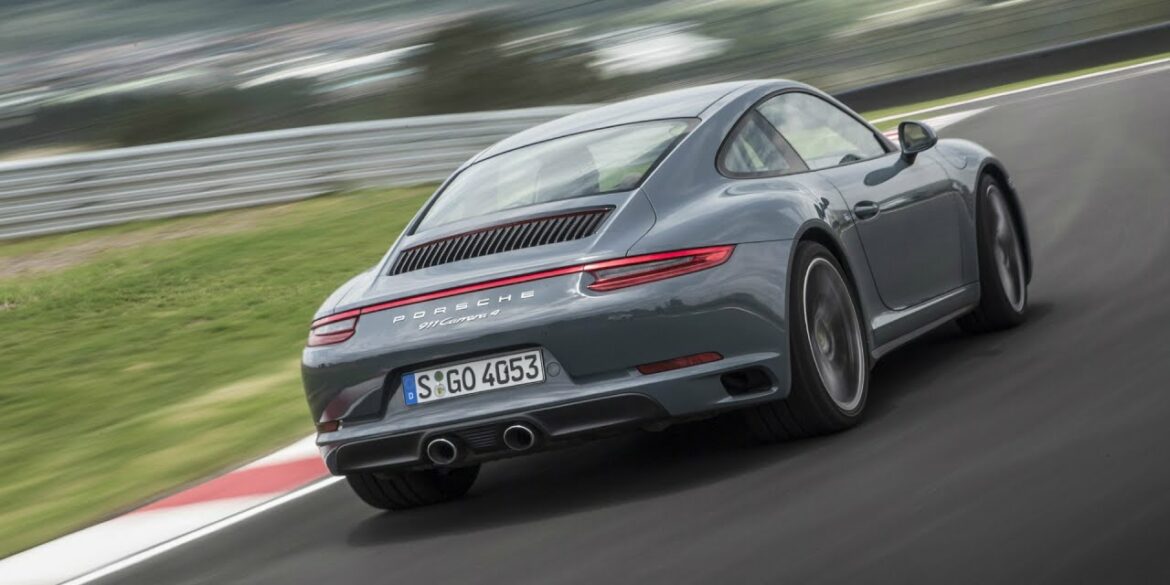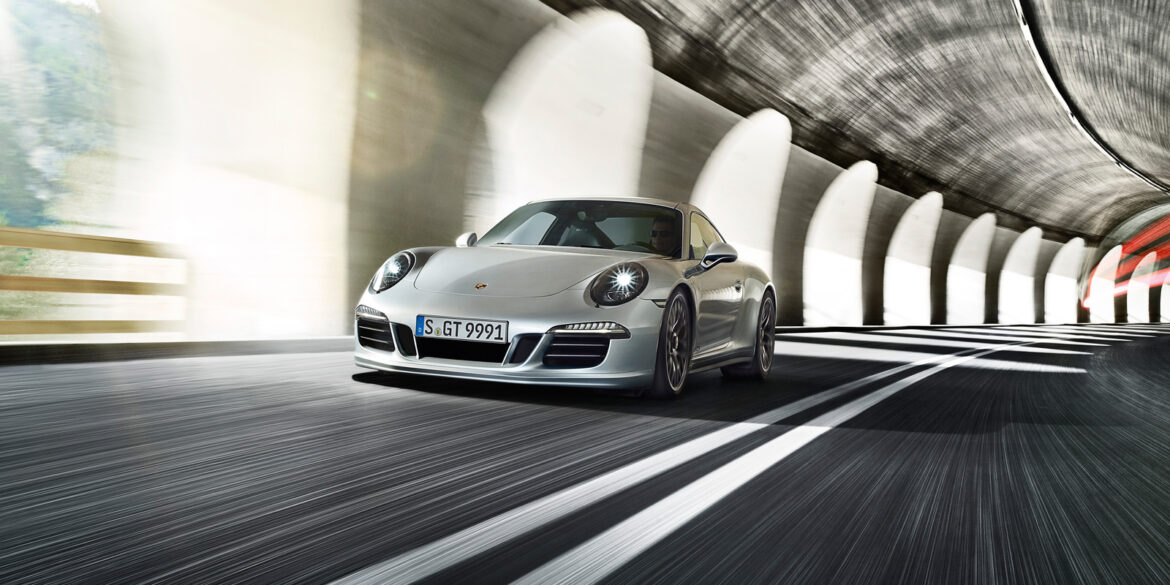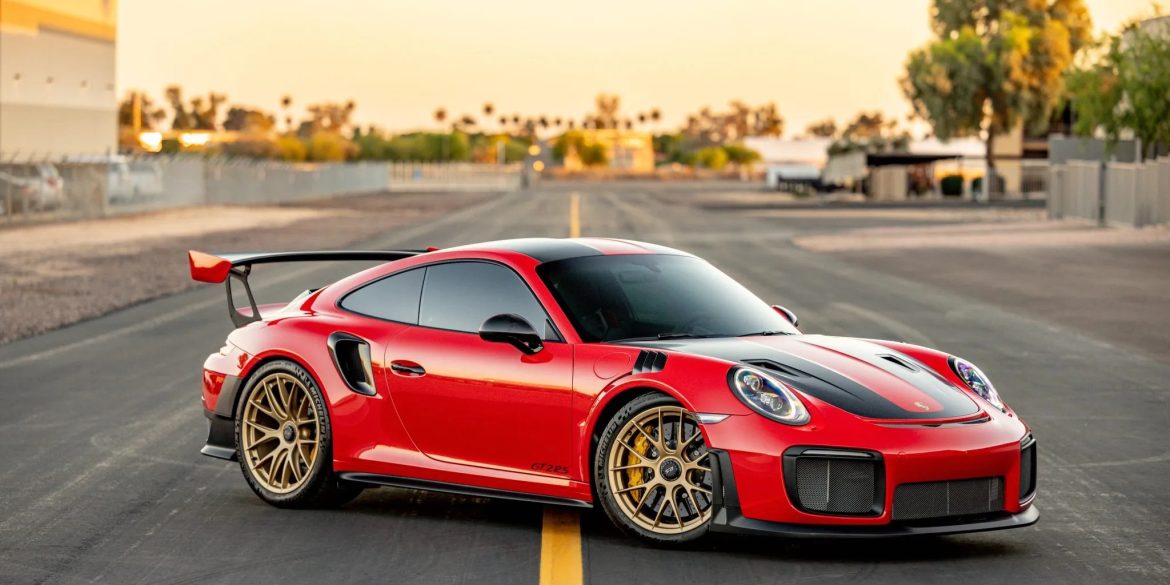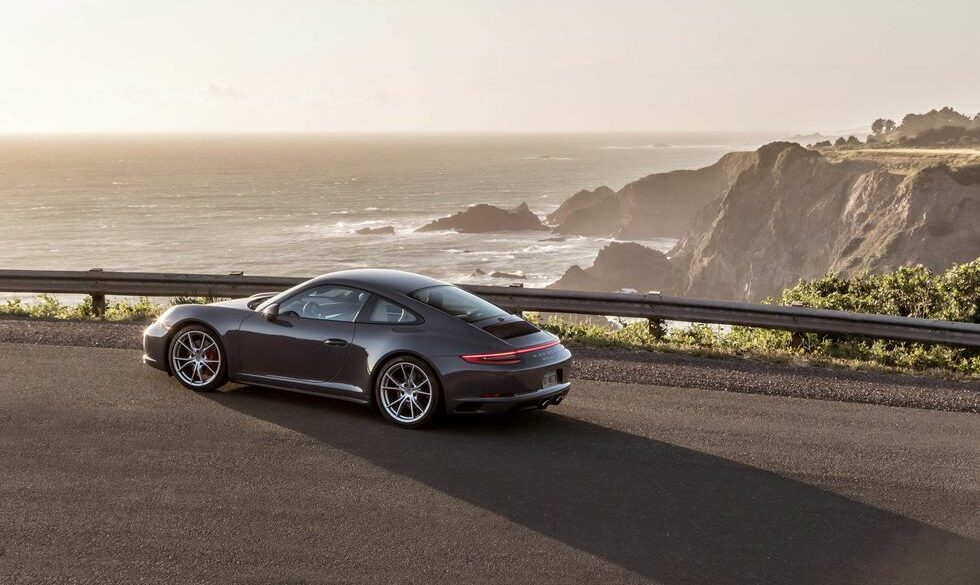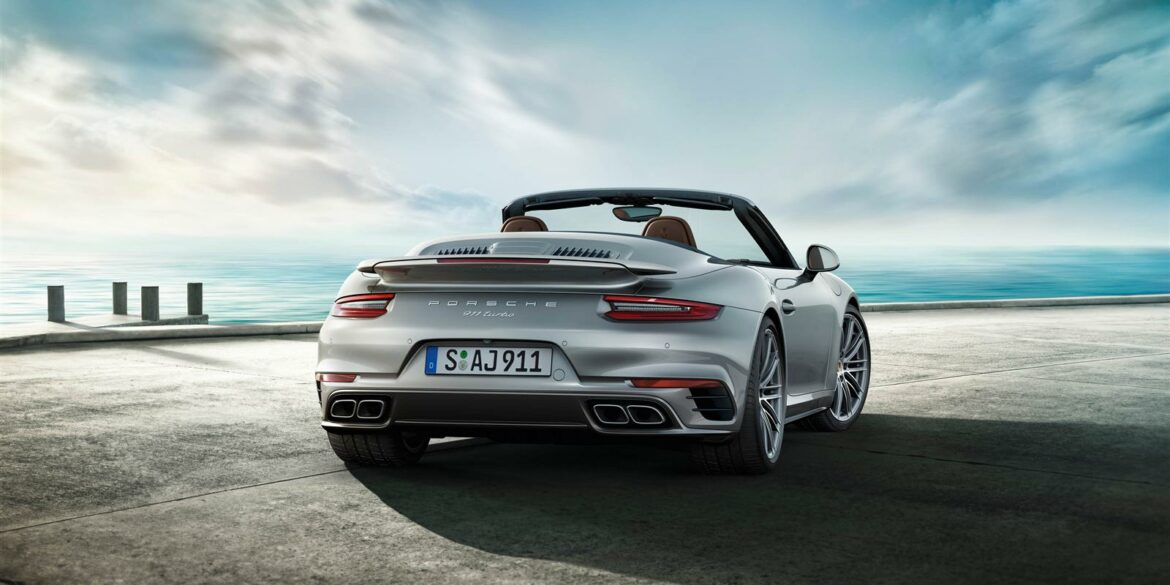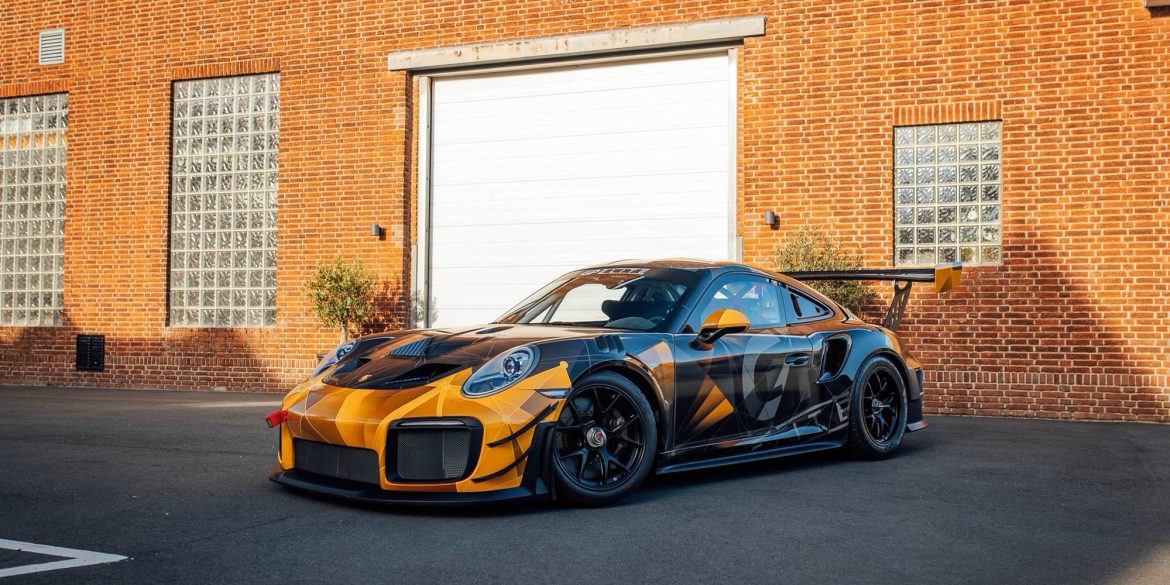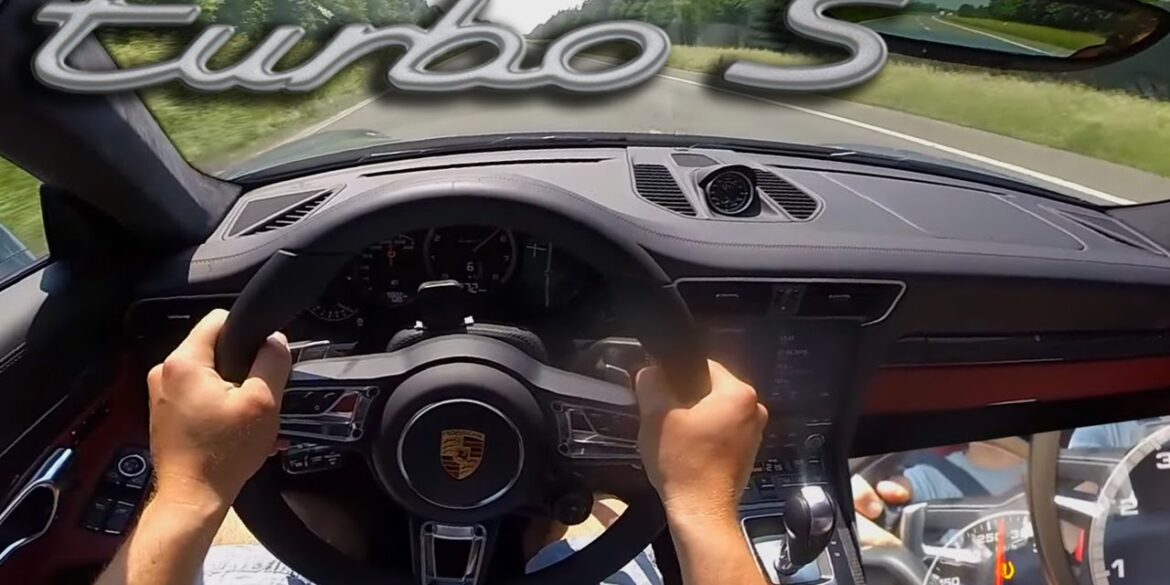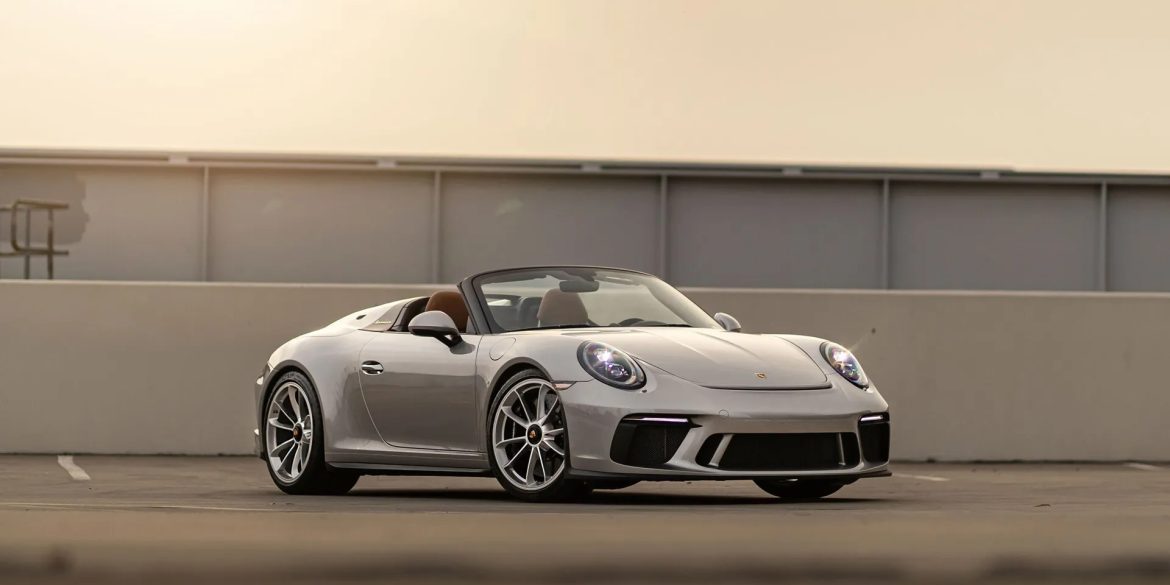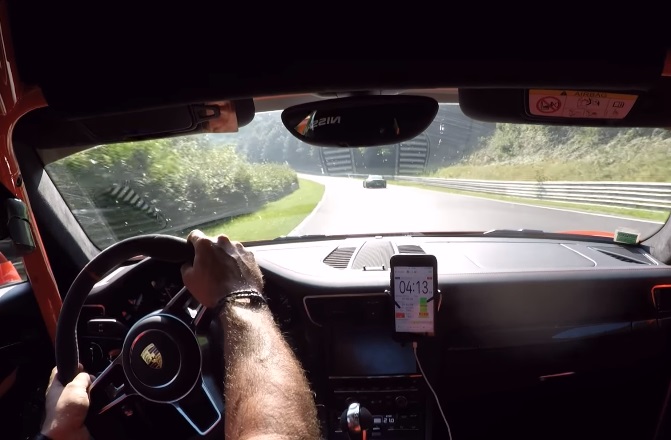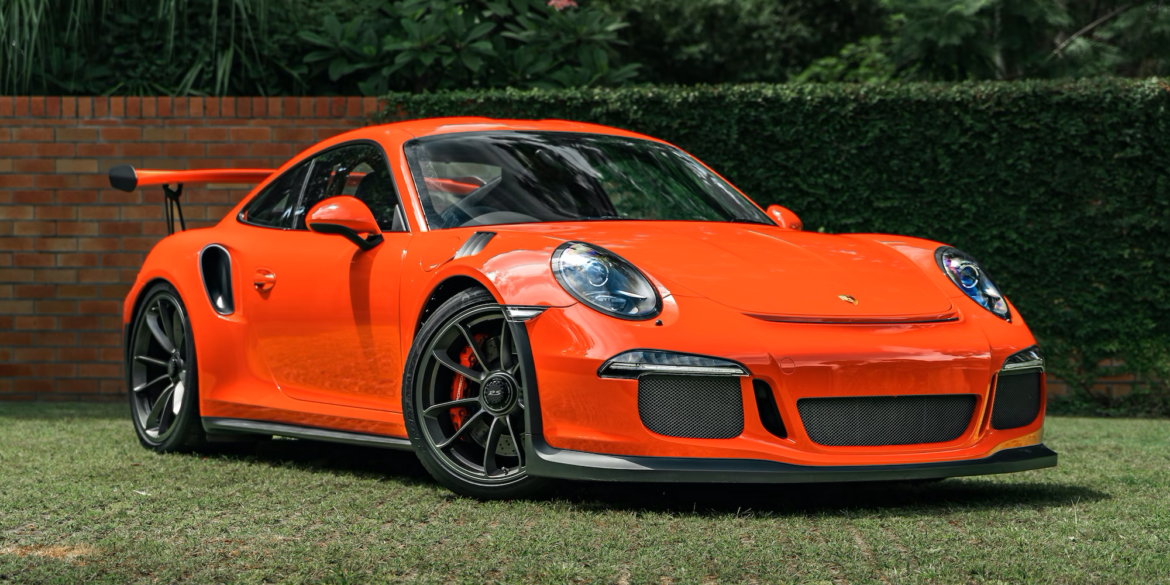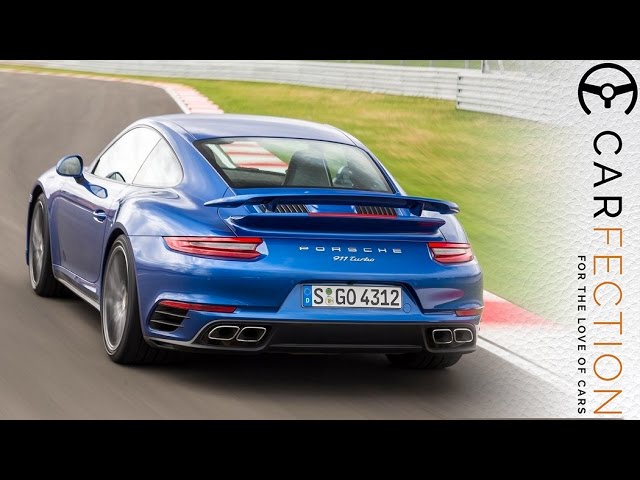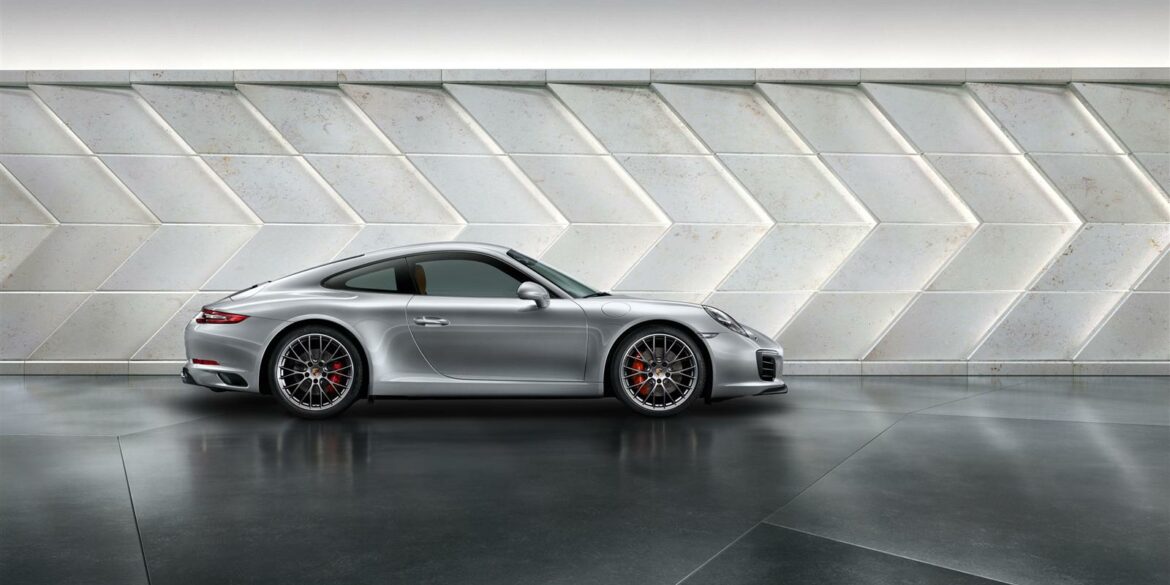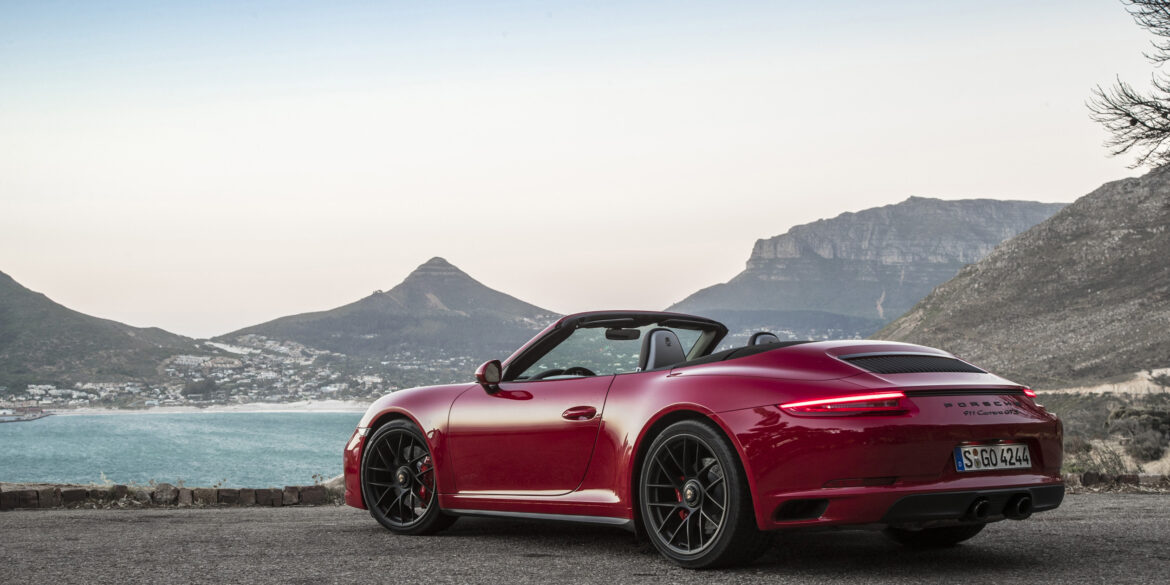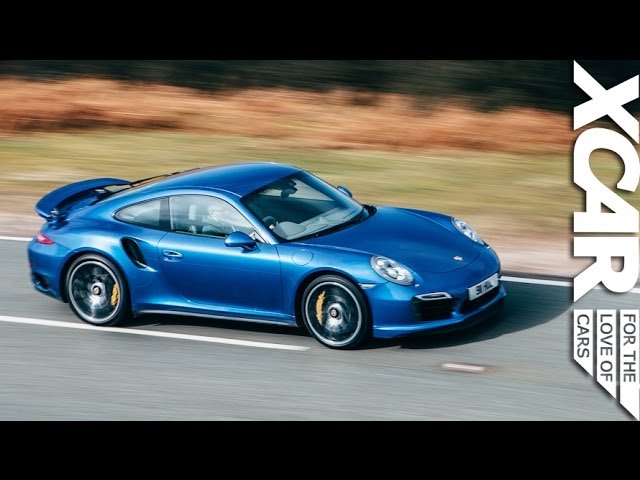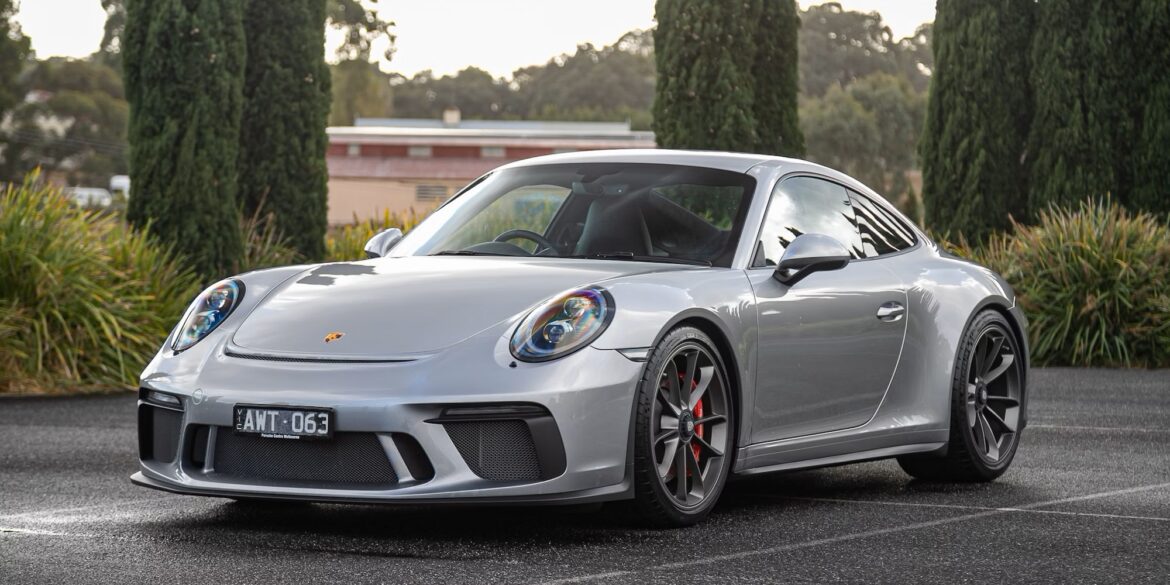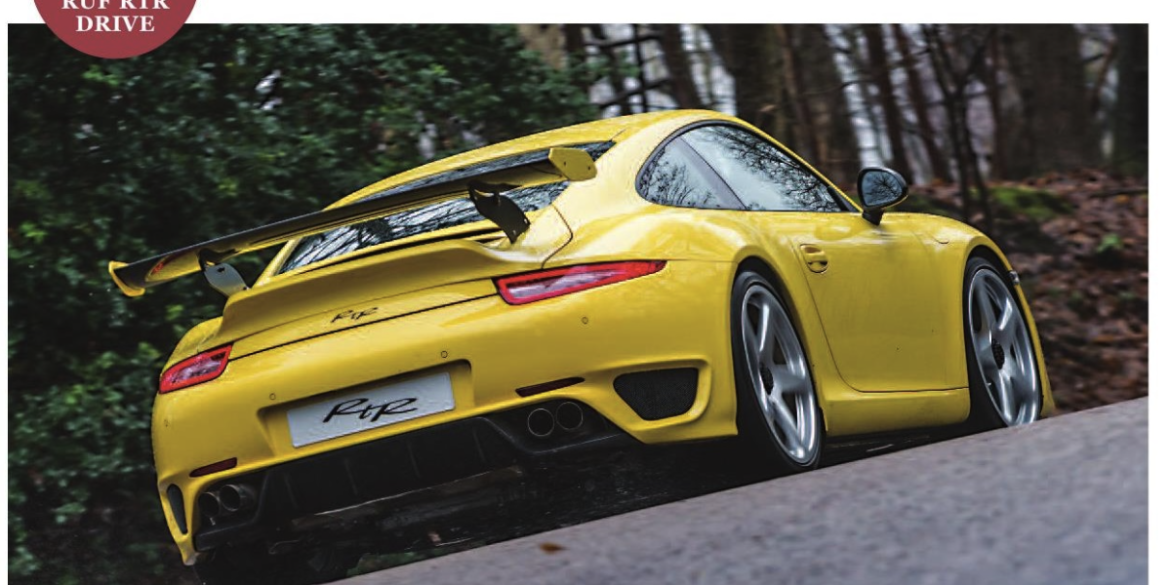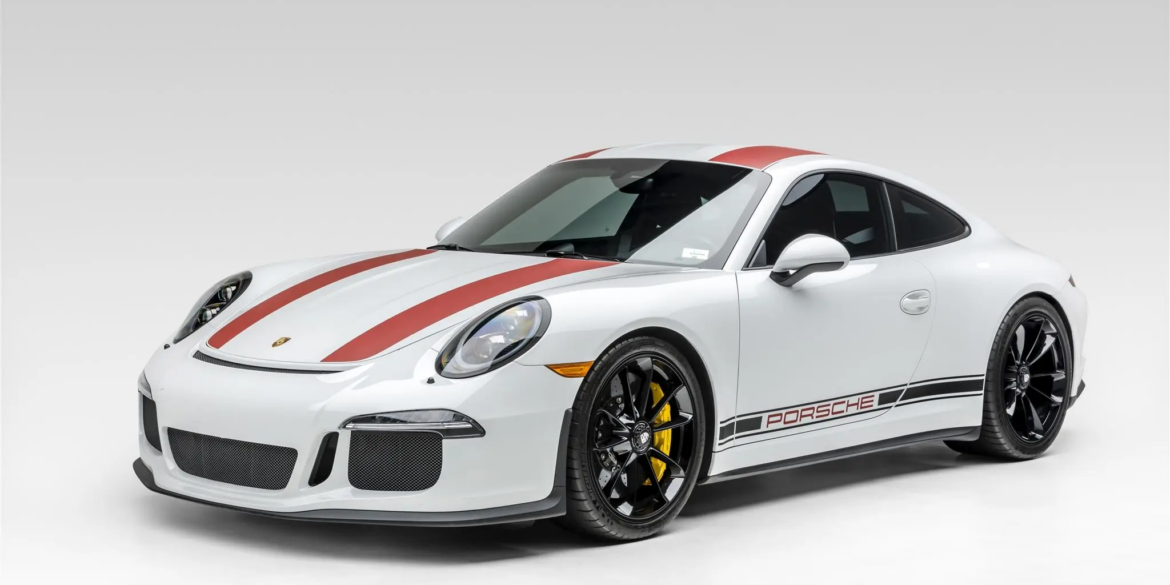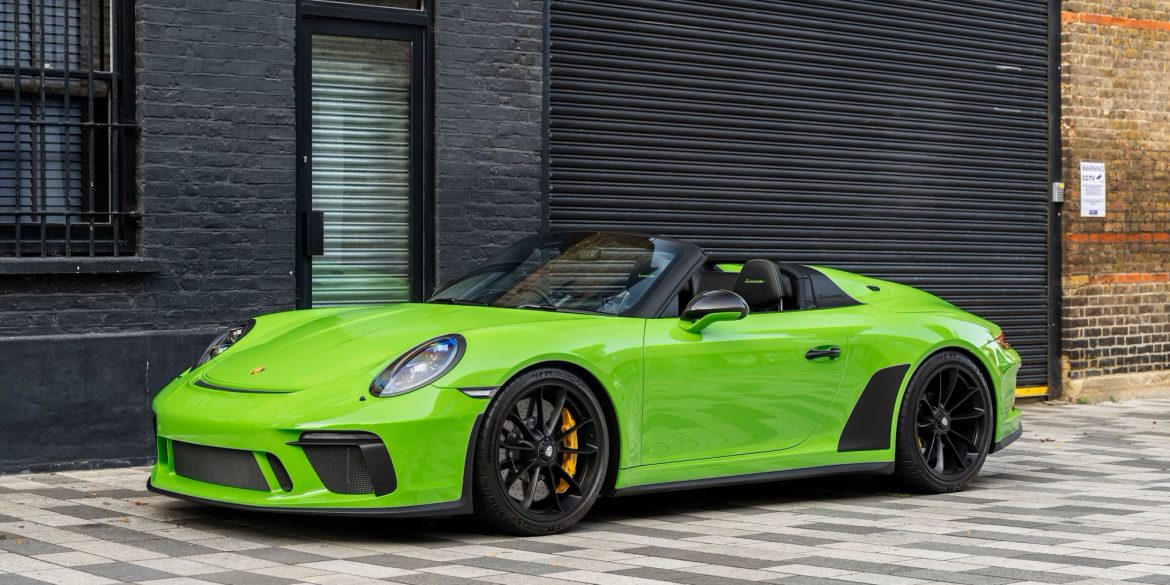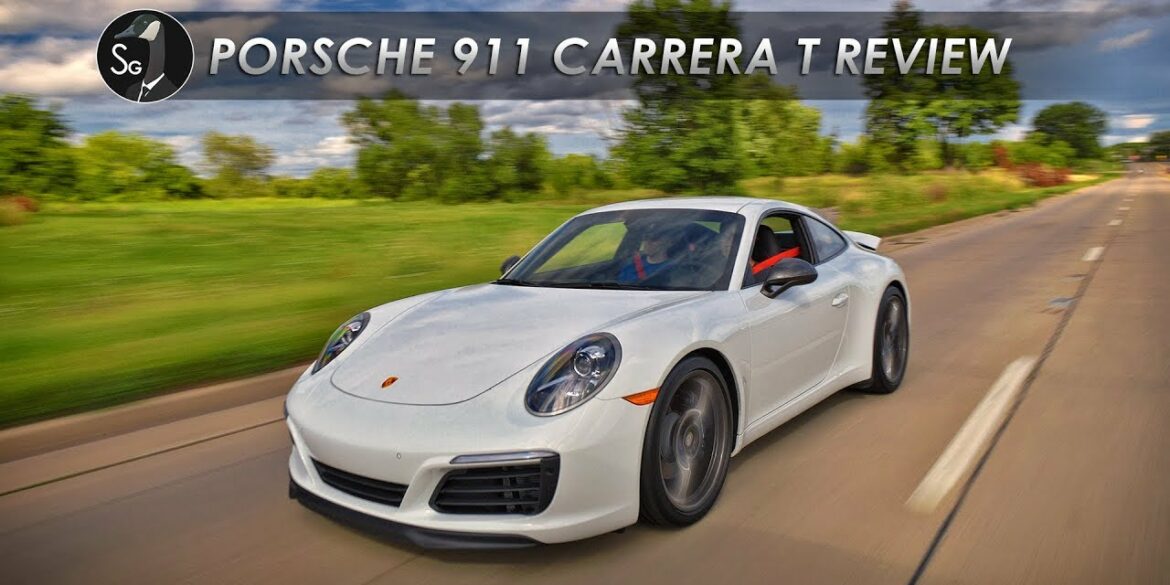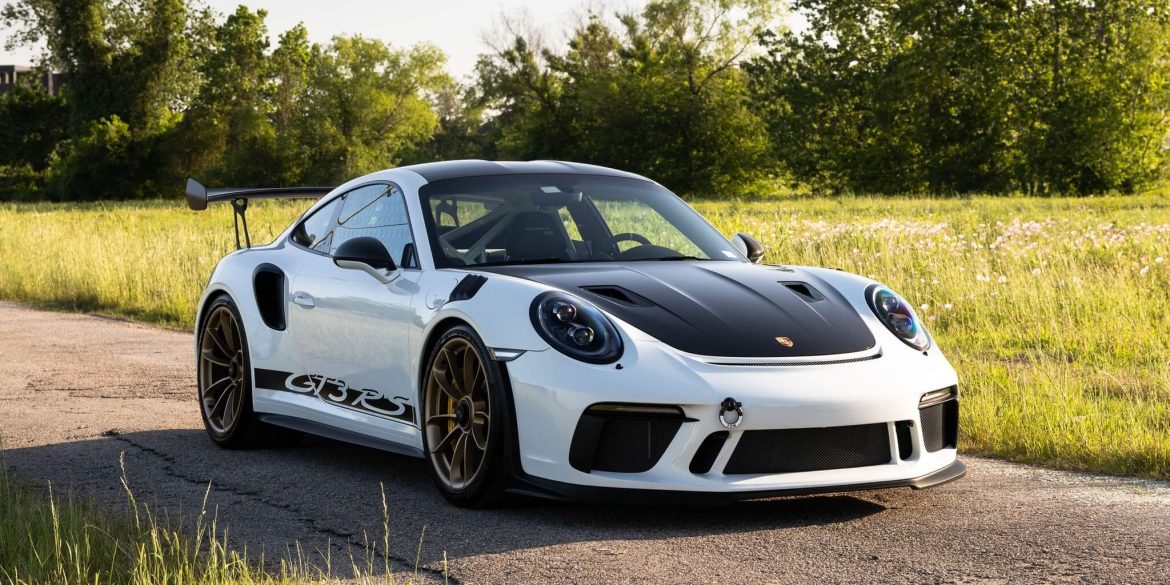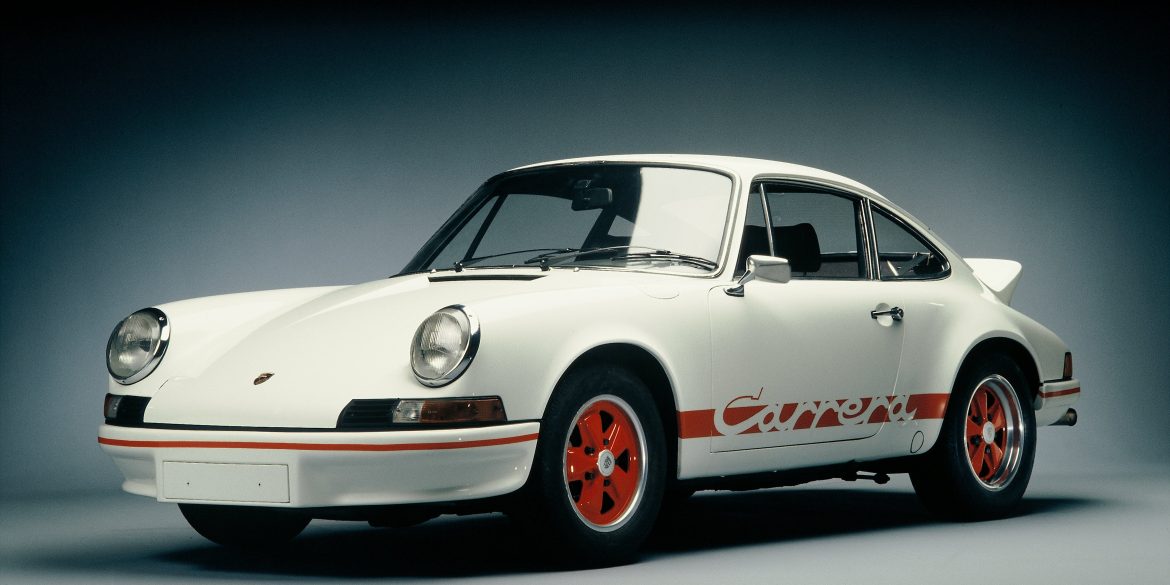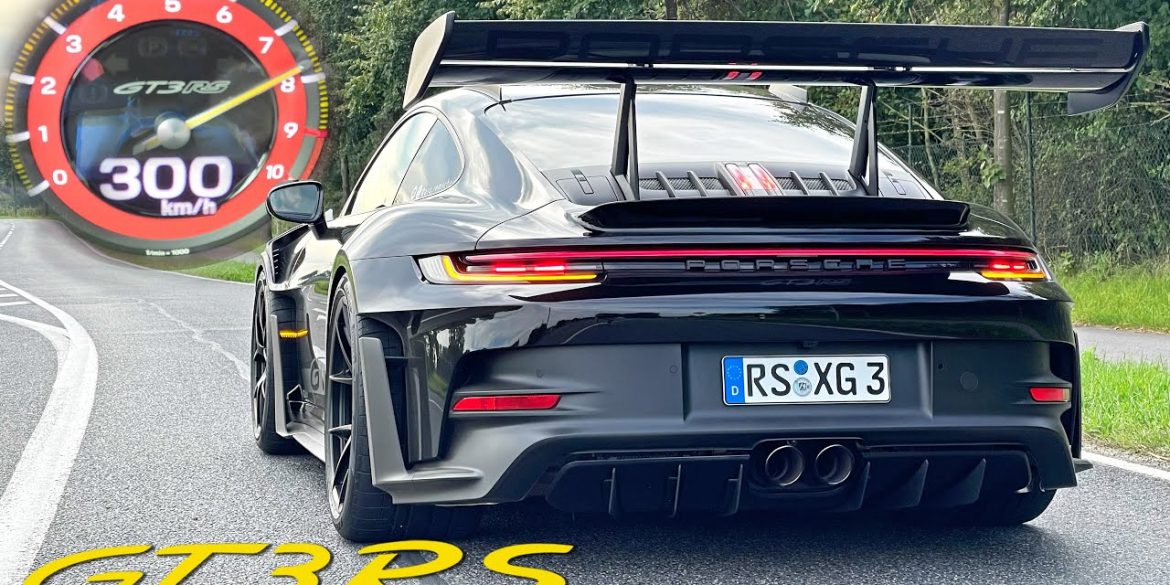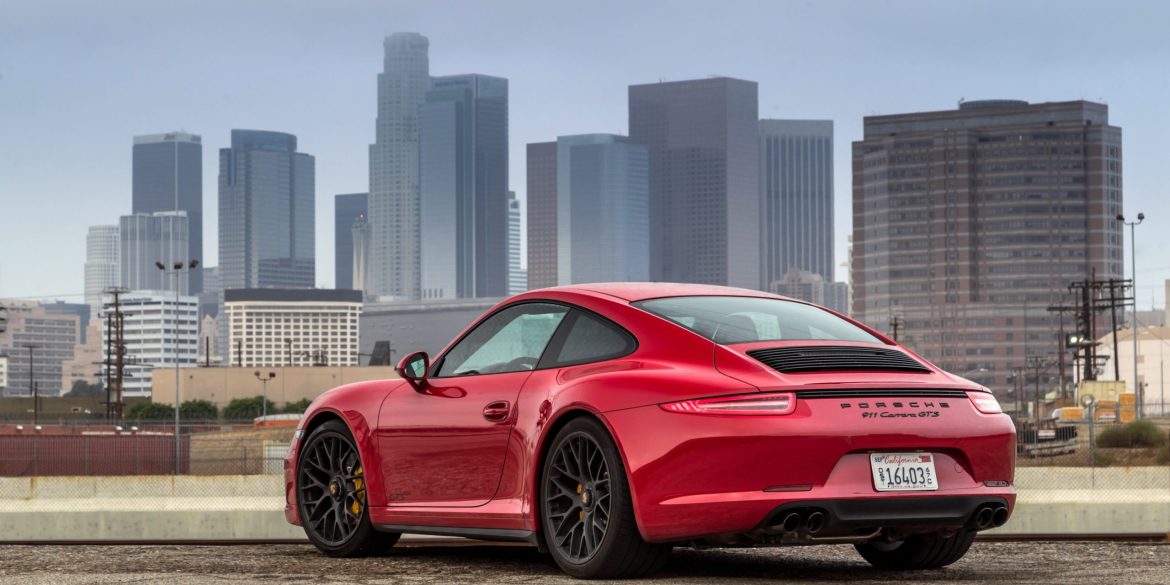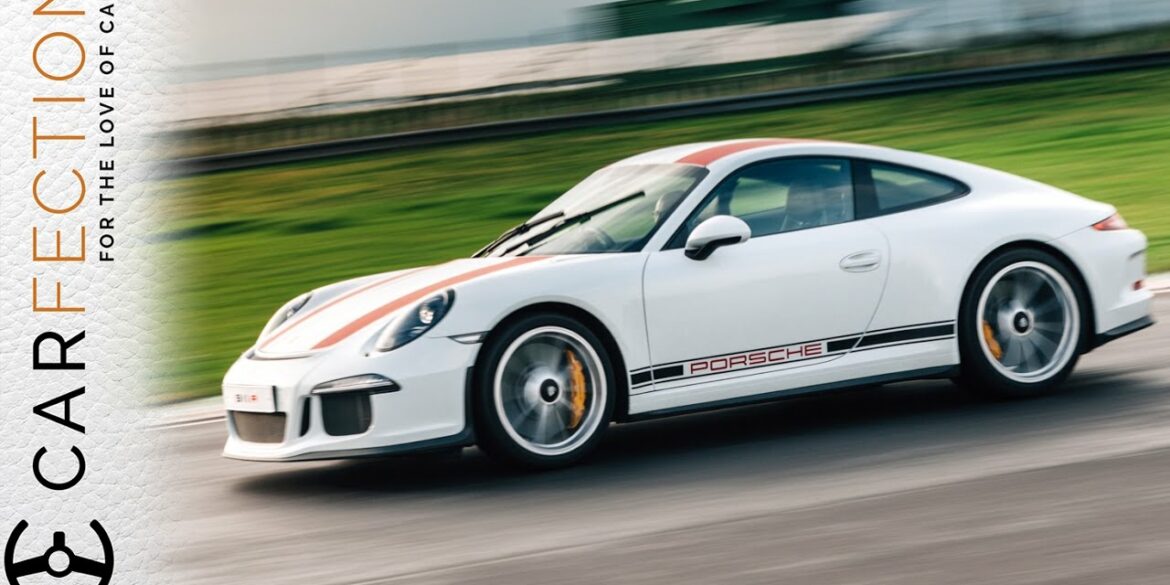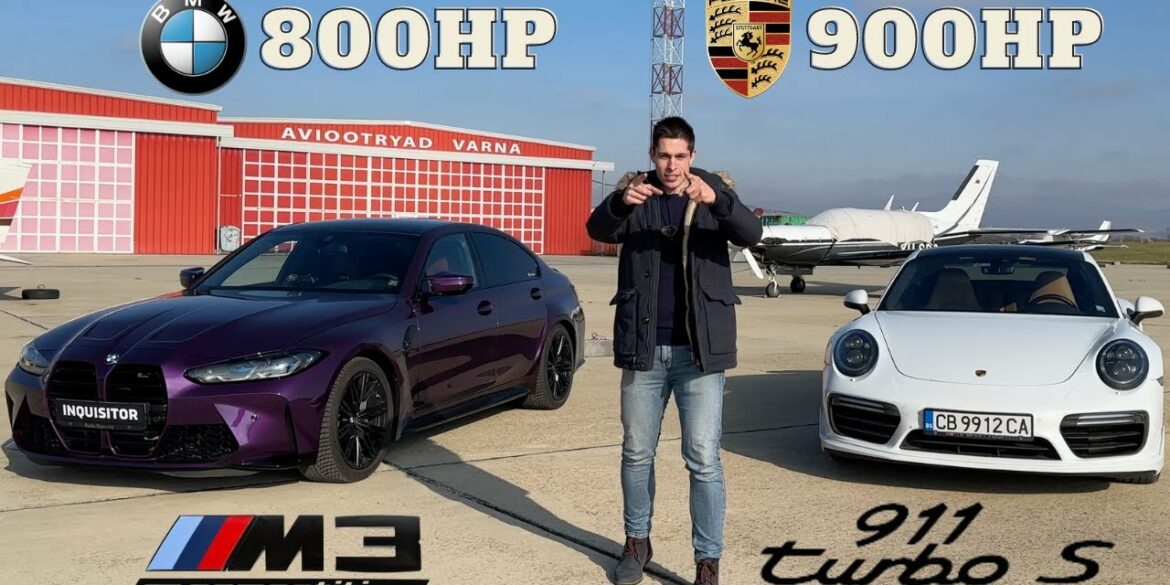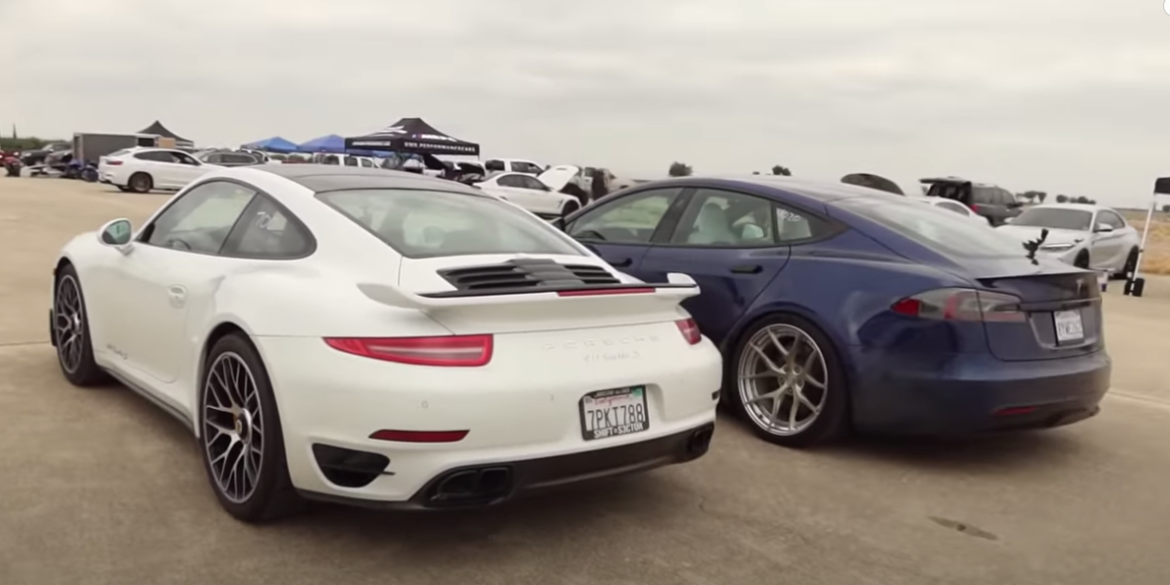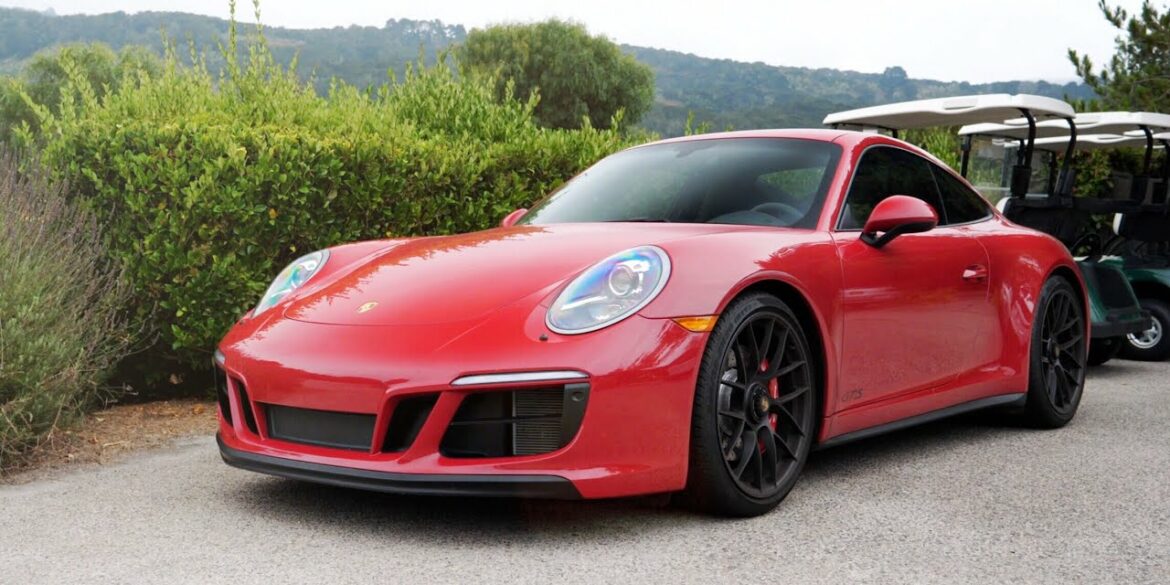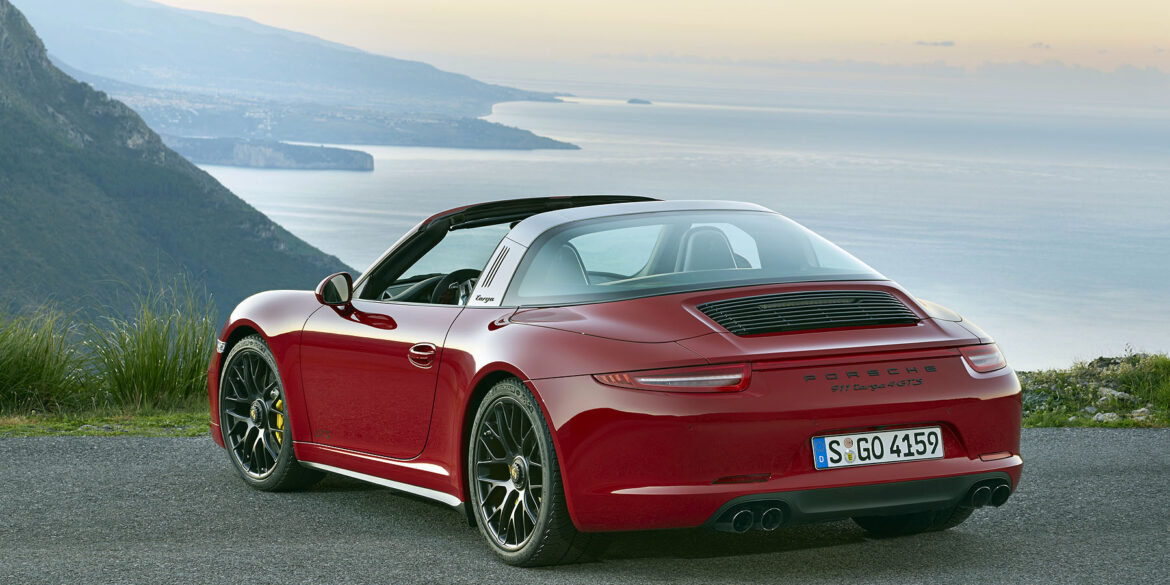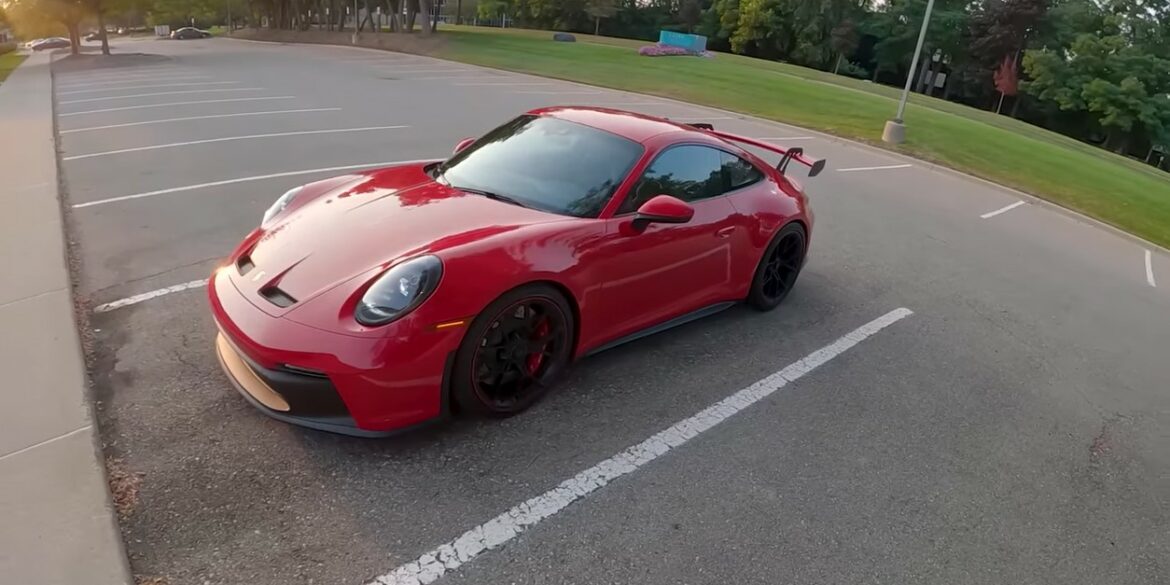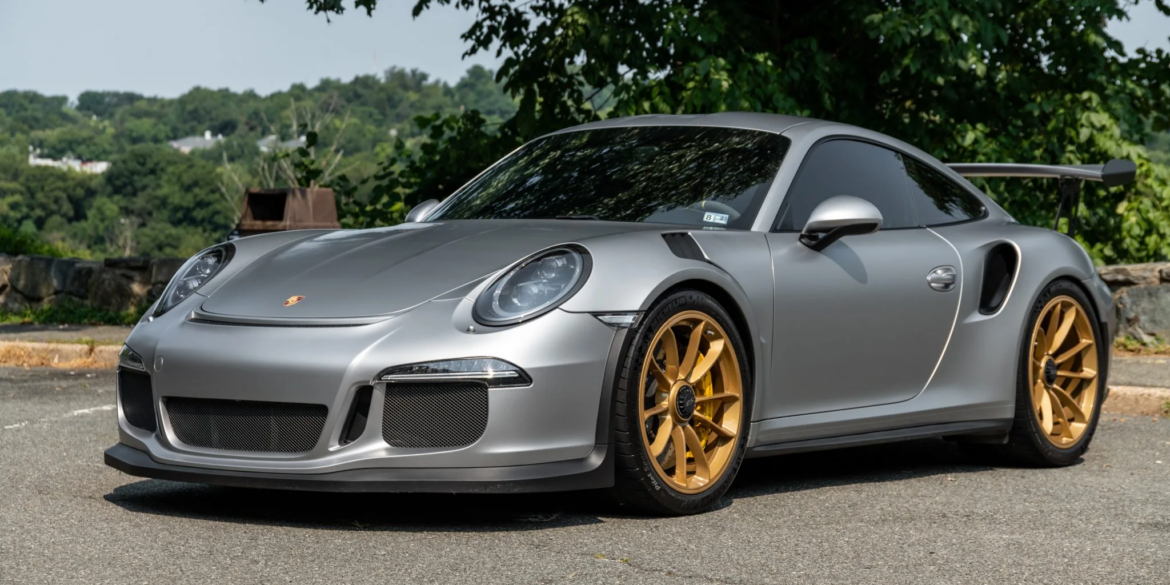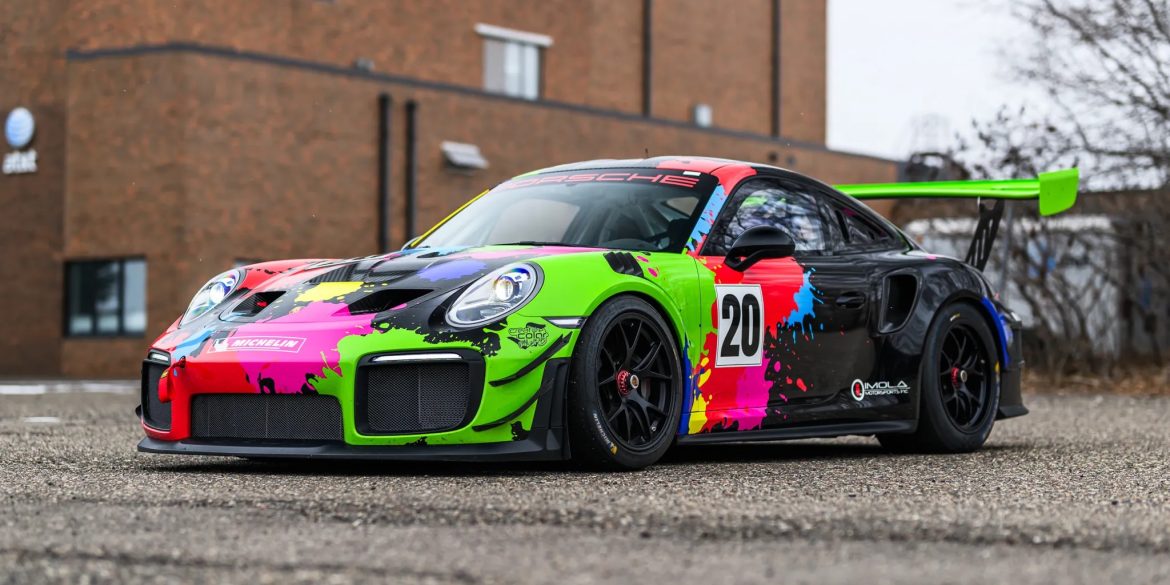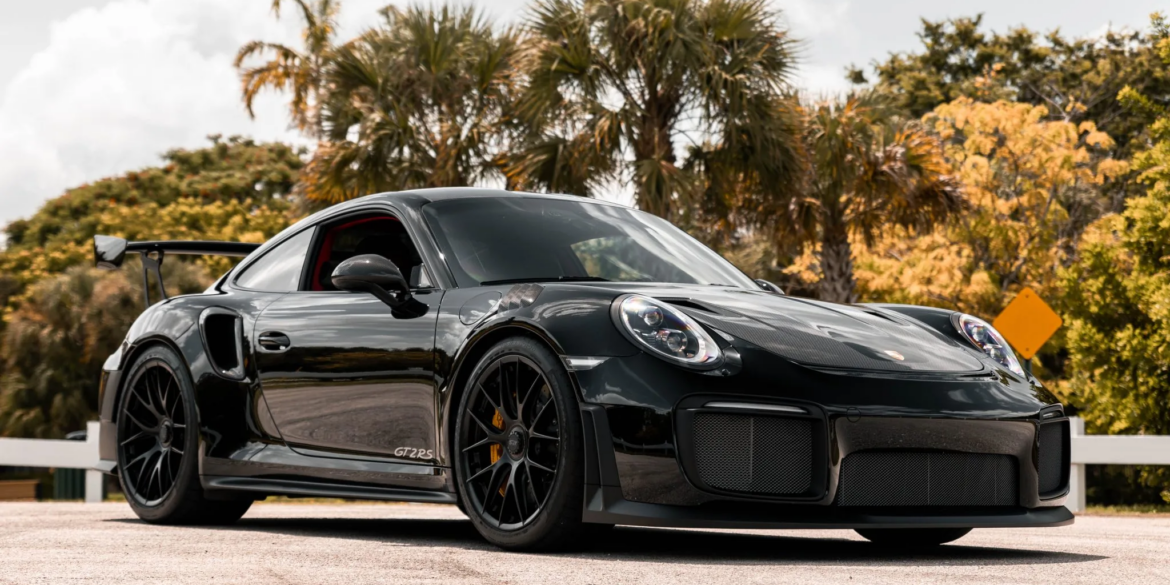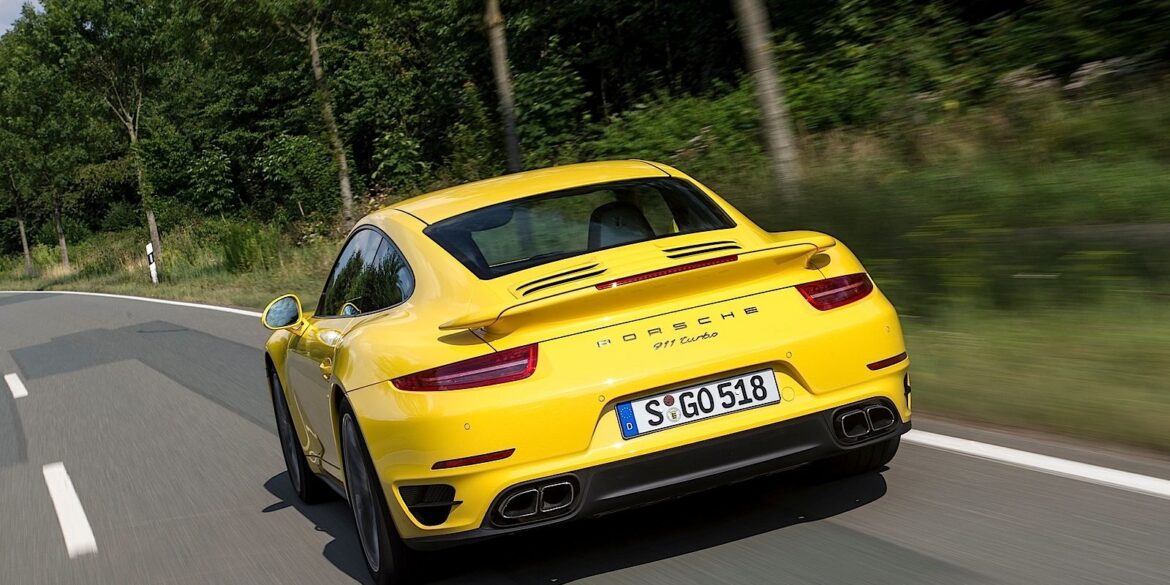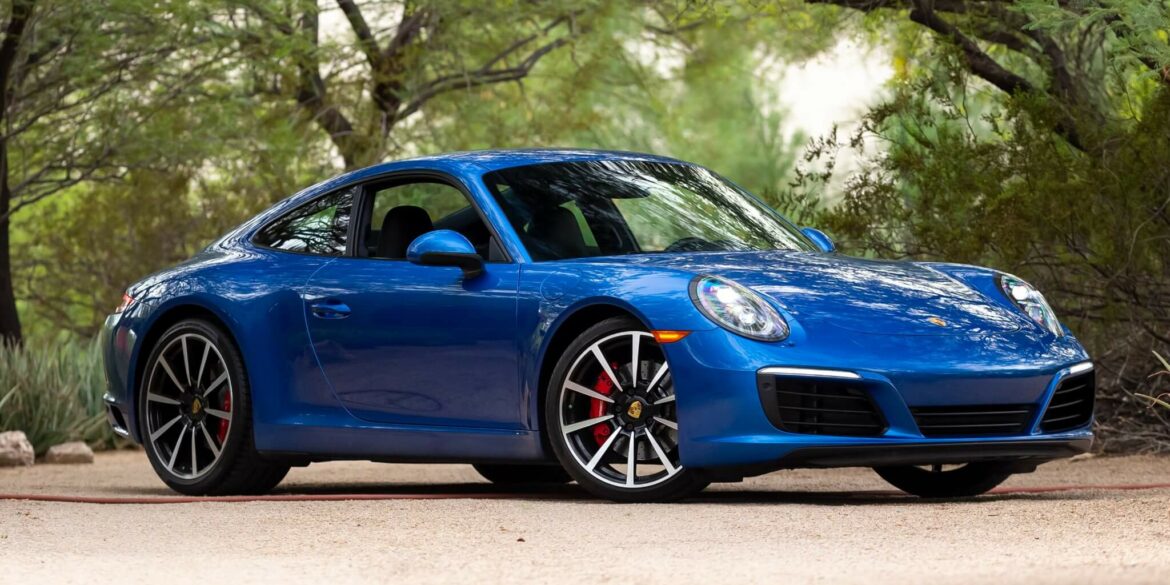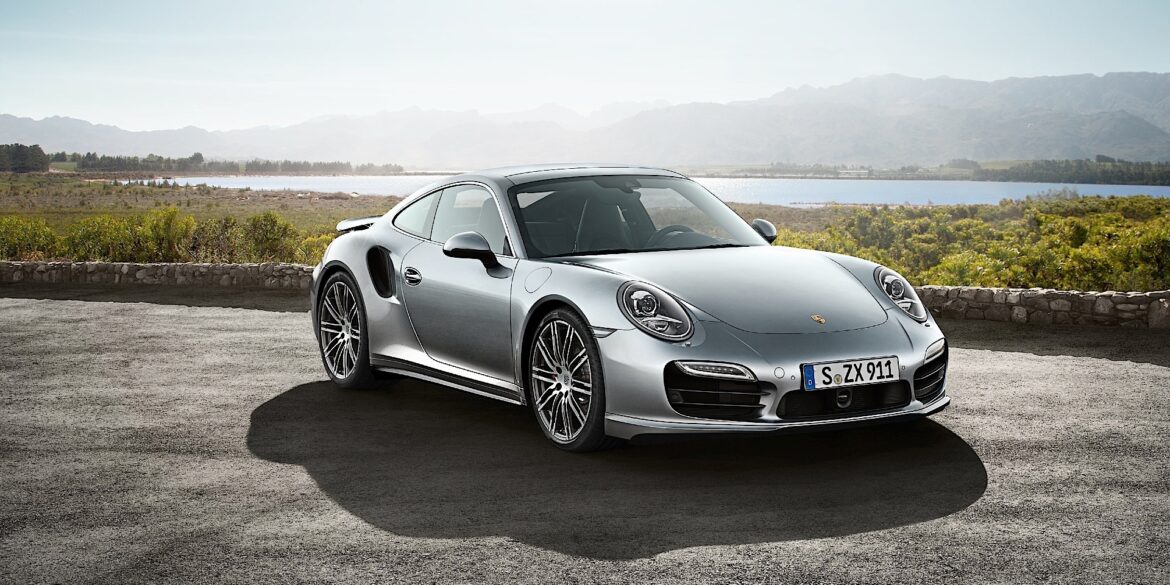2016 – 2019 Porsche 911 Carrera (991.2) Pictures & Gallery...
Porsche 911 (991)
The Type 991 911 series was the seventh generation of the iconic 911. The 991 generation models were unmistakably 911 in looks and design philosophy, but the 991 was really the ultimate evolution of Porsche 911s becoming highly technical, high quality and well built machines. Quality improved and the technology jump finally vaulted Porsche to the top of the automakers in terms of building the best cars on the planet. The Type 991 represented the most technically advanced 911 model to date and the 991 looked more powerful than any other 911 before – an effect that was heightened by the wider track and a stretched wheelbase. It also featured adaptive aerodynamics: the 911 was the first series sports car from Porsche to adopt this technology from the 918 Spyder hybrid super sports car. The 991.1 generation cars launched as MY 2012 cars. The 345hp 3.4 liter Carrera and 400hp 3.8 liter Carrera S launched first, in both Coupe and Cabriolet bodystyles and could be had with either rear and all-wheel drive drivetrains. The 991s all got electric power steering which took away some of the feel we were used to. The Carrera S got PASM standard (optional on the Carrera). The new Turbo (in coupe and cabriolet) came out in 2013, now with a whopping 512hp. See all of our Porsche 991 Research.
2013 Porsche 911 Carrera 4 Cabriolet (991) Technical Specifications Engine Type Flat 6 Induction Normally-aspirated Cooling Water-cooled Valvetrain Four overhead camshafts, four valves per cylinder Injection Direct Injection. Variable Intake. Bore X Stroke 3.82 in/97.0 mm x 3.05 in/77.5 mm Displacement 209.7 cu-in/3,436 cc Horsepower 345 bhp @ 7400 rpm Torque 287...
Porsche 911 Turbo S | Chris Harris Drives | Top Gear The Porsche 911 Turbo S has always been a bit of an enigma, so how does this new, 991.2 face lifted version fare? We dispatched Chris Harris to one of the world’s greatest racetracks – Kyalami, in South Africa...
Porsche 911 (991) Engine Codes There are more versions of the 991 Carrera than you can shake a stick at! A seemingly bewildering number of model versions of essentially the same car and confusing distinctions between them. The Carrera, 4, S, GTS, Targa, Cabriolet, 4 S Targa, 4 GTS, GTS...
Experience the ultimate thrill of driving with this 2014 Porsche 911 Turbo S coupe, which was modified by TechArt to enhance its already exceptional performance. This beauty features a twin-turbocharged 3.8L flat-six engine that generates power to all four wheels via a seven-speed PDK dual-clutch transaxle and an electronically locking...
Reviewing The Sweet Spot 911...
2013 Porsche 911 Carrera Coupe (991) Technical Specifications Engine Type Flat 6 Induction Normally-aspirated Cooling Water-cooled Valvetrain Four overhead camshafts, four valves per cylinder Injection Direct Injection. Variable Intake. Bore X Stroke 3.82 in/97.0 mm x 3.03 in/77.5 mm Displacement 209.7 cu-in/3,436 cc Horsepower 345 bhp @ 7400 rpm Torque 287 ft...
Does the turbocharged 911 move the game on enough? After a mammoth road test in issue 137, Total 911 decide which generation of 991 Carrera is better, the turbocharged Gen2 or naturally aspirated Gen1....
The 2019 Porsche 911 Speedster represents the final—and by many accounts, the finest—version of the highly regarded 991 generation, limited to just 1,948 units as a tribute to the year Porsche began production. Unlike Porsche’s minimalist roots, this Speedster is packed with exclusive features, including a lightweight, manually operated fabric...
Acquired by the seller in March 2019, this 991.2-generation Porsche 911 GT3 features a host of desirable options like its black paintwork over black leather and Alcantara upholstery. Other extra features available in this 2018 Porsche 911 GT3 include Sport Chrono Package, Satin Platinum center-lock wheels, Porsche Ceramic Composite Brakes,...
In a recent video shared by AutoTopNL on YouTube, we get to see a Porsche 991.2 Turbo S gets pushed to the limits on the German Autobahn. This Turbo S is fitted with an IPE exhaust, with no mention of additional modifications. In its stock configuration, this model generation features...
The 2014 50th Anniversary Edition 911 was built by Porsche to commemorate the 911’s birthday, 50 years after its production launch in 1964. In homage to 1963, the year the 911 debuted at the 1963 Frankfurt Motor Show, production was limited to 1,963 units. The 50th Anniversary uses the wider body from a Carrera 4S (but remains only rear-wheel-drive) and is lower than a standard Carrera by 10mm. The 20 inch-alloys are a modern take on the original Fuchs wheels, and the seats are finished in “Pepita” cloth. Includes Porsche Active Suspension Management (PASM), sports exhaust and powerkit tickled 430 hp flat six.
The 991 Carrera S continued the time honored Porsche 911 tradition of growing in physical size and power. Over the years the 911 has continued its evolution from a pure sports car to a luxurious super-car and the 2012 Carrera S Coupe was no exception. The seventh generation 911 launched in 2012 and it sits on a new platform, with a longer wheelbase and shorter overhangs. It also featured new headlights and taillights. Features a 3.8-liter flat-six engine mated as standard to a world's first seven-speed manual transmission.
Here’s what happens when you let a rally driver slide behind the wheel of a Porsche GT3 RS by Manthey Racing with Misha Charoudin riding shotgun!...
2013 Porsche 911 Carrera Cabriolet (991) Technical Specifications Engine Type Flat 6 Induction Normally-aspirated Cooling Water-cooled Valvetrain Four overhead camshafts, four valves per cylinder Injection Direct Injection. Variable Intake. Bore X Stroke 3.82 in/97.0 mm x 3.05 in/77.5 mm Displacement 209.7 cu-in/3,436 cc Horsepower 345 bhp @ 7400 rpm Torque 287 ft...
On Track With Porsche’s Best 2018 Porsche GT2 RS, Porsche GT3, Porsche 911T, 718 Cayman GTS, and 718 Boxster GTS. What other companies cars would you want to drive on a track? Lamborghini, Jaguar, Aston Martin, Ferrari?...
Ultimately, the Carrera 4 GTS is the ideal all-round 911. Its bag of tricks gives you accessible, astonishing performance on the right road – but its price tag and comfort levels make it a little more acceptable for everyday use than a GT2, GT3 or Turbo. The GTS scores particularly well on the practicality to performance ratio. Its rear seats can accommodate people and its all-wheel drive system means you can really use this car all-year round. The GTS-spec 3.0-litre flat-six develops 30bhp more than a Carrera S (at 444bhp) and 37lb ft more torque (at 406lb ft).
One of the BEST Sportscars Money Can Buy I’ve always wondered if there existed a realistically attainable sportscar that could convince me to sell my original Acura NSX, and just what that car might be. Enter the 991 Porsche 911 GT3....
991 Carrera 4S v Carrera 2S Track Battle C2S vs C4S or C2 vs C4 is the question. I take a look at the many small differences between the rear drive ‘2’ models and the all wheel drive ‘4’ models....
2018 Porsche 911 Carrera 4 Cabriolet (991.2) Technical Specifications Engine layout Rear Engine Engine type Boxer, twin-turbo Cylinders 6 Valves per cylinder 4 Construction Aluminum crankcase and heads Fuel injection Direct Fuel Injection (DFI) Fuel Premium Displacement (Liters) 3.01 Bore/Stroke (mm/mm) 91.0 mm / 76.0 mm Maximum power output @ engine...
This 991.2-generation Porsche 911 GT3 available for auction on PCarMarket possesses a number of desirable features, chief amongst is its paint-to-sample exterior color of nonmetallic green complemented by optional LED headlights in Black and factory 20” GT3 center-lock wheels in an exclusive Satin Black finish. The introduction of the 991.2...
With the Turbo S, the PDCC Porsche Dynamic Chassis Control hydraulic roll bars came as standard. The PCCB Porsche Ceramic Composite Brakes had been standard on the Turbo S already since the 996 generation. New options included the radar-based lane change assist and a lift system for the front axle (increased ground clearance by 1.6″/40 mm). The PCM now had a multi-touch screen like in the facelifted 991 Carrera. Routes and places could be visualized with 360-degree images and satellite images. Engine gets more horsepower too, now with 572 bhp and 553 ft lbs of torque.
Make no mistake that the Speedster is an absolutely fitting conclusion to the 991-generation. The Porsche 911 Speedster is an ingenious amalgamation of the latest technologies on offer, and the more simple ingredients that have been a principle of driving enjoyment since the invention of automobiles. A 502-horsepower engine, without turbochargers. A modern transmission, with just one clutch. A state-of-the-art suspension and chassis, with an unsullied purity. The list goes on. Perhaps the only drawback is that the Speedster’s rarity and price.
Porsche 911 Turbo S 992 v 991 Head To Head It’s the one you Porsche fanboys have been waiting for – a Porsche 911 Turbo S showdown! Mat’s in 911 992 Turbo S, and he’s going to find out just how different the performance is compared to the older 991.2 Turbo...
2013 Porsche 911 Carrera 4S (991) Technical Specifications Engine Type Flat 6 Induction Normally-aspirated Cooling Water-cooled Valvetrain Four overhead camshafts, four valves per cylinder Injection Direct Injection. Variable Intake. Bore X Stroke 4.02 in/102 mm x 3.03 in/77.5 mm Displacement 231.9 cu-in/3,800cc Horsepower 395 bhp @ 7400 rpm Torque 325 ft...
To celebrate 60 years of Porsche Club of America, PCNA (Porsche Cars North America) ordered 60 units of 911 Carrera GTS Coupés in Club Blue from Porsche Exclusive. All 60 cars were equipped with SportDesign aerokit (including ducktail). These Club cars were not numbered because it wasn't a special series by Porsche AG, but a series of similarly equipped cars ordered by PCNA. The cars got a few unique touches by Porsche Exclusive, like the special "Club Blau" paint, the "Club Coupe" stickers on the doors, the door entry guards with ''GTS Club Coupe" lettering and number "60" embossed on the armrest cover.
2014 Porsche 911 Carrera Cabriolet (991) Technical Specifications Engine Type Flat 6 Induction Normally-aspirated Cooling Water-cooled Valvetrain Four overhead camshafts, four valves per cylinder Injection Direct Injection. Variable Intake. Bore X Stroke 3.82 in/97.0 mm x 3.05 in/77.5 mm Displacement 209.7 cu-in/3,436 cc Horsepower 345 bhp @ 7400 rpm Torque 287 ft...
30 Point Water-Cooled & Modern Porsche 911 Buying & Inspection Checklist In this guide, we’ll walk you through a comprehensive 30-point checklist, covering everything you need to check irrespective which generation Porsche 911 you are looking to buy. We’ve even created a free, printable PDF version for each generation of air-cooled 911...
Carfection Makes The Case for the Manual Henry Catchpole demonstrates why the manual is something to be treasured in a 991.2 Porsche 911 GT3...
2017 – 2019 Porsche 911 Carrera GTS (991.2) Pictures & Gallery...
The 991.2 911 Targa 4S is powered by the latest water-cooled 3.0-liter twin-turbocharged flat-six from Porsche, producing 420 hp and 368 lb-ft of torque. It can be optioned with a PDK seven-speed dual-clutch automatic (a seven-speed manual is standard) and all-wheel drive is standard. Whereas the two earlier generations of Targas were little more than 911 Carreras with large glass sunroofs, the 991-series Targa nailed the look and feel of the original.
Porsche Option Codes – Porsche 911 (2017 Model Year) Looking to decode your 2017 Porsche 911 option codes? Want to know what those codes are in your 2017 Porsche 911 service manual? Then this is the post for you. We painstakingly researched all the Porsche option and equipment codes for...
Someone is having a Merry Christmas indeed as Bring A Trailer just closed the auction for a previously featured, No Reserve, extremely rare, well preserved, low mileage 1994 Porsche 911 (964) Turbo S for a whopping $1.26 Million. Though the chance to acquire this uniquely valuable specimen has passed, here...
Porsche officially unveiled the 991 GT2 RS at the 2017 Goodwood Festival of Speed. This model boasts a carbon-fiber reinforced bonnet, rear-view mirror casings, and front and rear wings. Lightweight polyurethane is utilized for the front splitter and rear diffuser, and the side windows are made of polycarbonate instead of...
Porsche 911 RSR (991) (2017-2019) – Pictures & Gallery...
The 911 GT3 with Touring Package was unveiled yesterday at the 67th International Motor Show (IAA) in Frankfurt, Germany. Available exclusively with a manual six-speed gearbox, the new no-cost option extends the choice of models available to the 911 enthusiast, perhaps further highlighting the popularity of the manual gearbox in...
The Porsche 911 GT2 RS made its debut during the 997 generation in 2010, receiving immense praise. The 991-generation GT2 RS was introduced in 2018, boasting 80 additional horsepower and 37 more pound-feet of torque compared to its predecessor. With these enhancements, it can sprint from 0 to 60 mph...
A Drive That Dreams Are Made Of...
Epic Track Battle. Which Is Faster? Since 2012 McLaren’s line-up has ballooned from one car to eight – and one of the latest arrivals is the 570S. Based on similar carbon fibre underpinnings to its stablemates, the newcomer is designed as a supercar you can live with day to day. However,...
The Porsche 911 R On Track The phenomenal Porsche 911 R stars in our penultimate video from Britain’s Best Driver’s Car 2016. Every autumn we set out to name Britain’s Best Driver’s Car, in our annual new sports car extravaganza. Last year the Ferrari 488 GTB saw off all comers to...
Henry Catchpole drives the 991.2 Porsche 911 GT3 RS in search of the forgotten Sudschleife circuit....
From 1990 to 2019, Porsche has already produced over 4,200 units of the 911 GT3 Cup and each of them are built for the race track. Each example was also intensively tested by professional racing drivers before they are delivered to the customers. Bring A Trailer offers you the chance...
A stock Porsche 911 Turbo S, particularly from the 991-generation, is already an impressive vehicle. With a 560-horsepower 3.8L twin-turbo flat-six, it can achieve a 60 mph sprint in 2.6 seconds. Yet, for some enthusiasts, these figures are not enough, leading them to transform it into one of the fastest-accelerating...
The 2019 Porsche 911 Speedster, based on the 991.2 generation, was produced in a strictly limited run of 1,948 units, commemorating the year Porsche began production and its iconic legacy. This example, offered for sale on Collecting Cars, is 544 in that exclusive series. Sharing its powertrain with the 911...
Ultimate Track Test Road Racers. Ford GT, Porsche 911 GT2 RS, AMG GT R and Lotus Exige Cup 430 – four motorsport inspired road cars on the same track, with the same Michelin Pilot Sport Cup 2 tyres on the same day. But which is quickest around the Anglesey Coastal...
This is the open-top model for those who don’t want the full convertible experience – and it’s only available in the wide-hipped four-wheel drive bodyshell. The new Targa is a striking design, echoing the 1965 original with its fixed rollover bar. The Targa 4S, gets you the more powerful 3.8 engine from the Carrera S. It mixes regular Carrera 4S go with a sense of style and everyday usability (those occasional rear seats, the real possibility of 30mpg in everyday driving). Great car.
2012 Porsche 911 Carrera Cabriolet (991) Technical Specifications Engine Type Flat 6 Induction Normally-aspirated Cooling Water-cooled Valvetrain Four overhead camshafts, four valves per cylinder Injection Direct Injection. Variable Intake. Bore X Stroke 3.82 in/97.0 mm x 3.05 in/77.5 mm Displacement 209.7 cu-in/3,436 cc Horsepower 345 bhp @ 7400 rpm Torque 287 ft...
Watch as the folks from Sam CarLegion YouTube channel pits a Ford Mustang GT500, a 2018 Ford Roush Mustang GT, and a 991 Porsche GT3 RS in a drag race. Porsche’s 991 GT3 RS, weighing 3,296 lbs, boasts a 7-speed dual-clutch transmission and a 4.0-liter 6-cylinder boxer engine, delivering 493...
The 2019 Porsche 911 Speedster, celebrated as the highlight of the 991 generation, was produced in a limited edition of just 1,948 units, commemorating Porsche’s first year of production. Departing from the brand’s early minimalist roots, this Speedster is loaded with bespoke features, including a manually operated fabric roof aimed...
2014 Porsche 911 Carrera Coupe (991) Technical Specifications Engine Type Flat 6 Induction Normally-aspirated Cooling Water-cooled Valvetrain Four overhead camshafts, four valves per cylinder Injection Direct Injection. Variable Intake. Bore X Stroke 3.82 in/97.0 mm x 3.03 in/77.5 mm Displacement 209.7 cu-in/3,436 cc Horsepower 345 bhp @ 7400 rpm Torque 287 ft...
2015 Porsche 911 Carrera S Cabriolet (991) Technical Specifications Engine Type Flat 6 Induction Normally-aspirated Cooling Water-cooled Valvetrain Four overhead camshafts, four valves per cylinder Injection Direct Injection. Variable Intake. Bore X Stroke 4.02 in/102 mm x 3.05 in/77.5 mm Displacement 231.9 cu-in/3,800cc Horsepower 395 bhp @ 7400 rpm Torque 325...
So what else do you get when you buy a 991 Carrera 4 GTS Cabriolet? First of all you get a 30 hp bump over the Carrera 4S to 430 hp from the 3.8L naturally aspirated flat-six. You get forged centre-lock black 20-inch wheels, dynamic engine mounts, the Sports Chrono Package, PASM adaptive damping with a lowered ride height, an interior swathed in Alcantara, a sinister front fascia with black intakes and custom rear apron with black tailpipes that broadcast the goods through an uber-nasty sport exhaust system. Other trim details include black lettering and smoked headlights.
Porsche 911 GT3 Buyer’s Guide (991 & 992) Over the past 2 decades, the Porsche 911 GT3 models—and their variants, such as the RS and Speedster—have gone on to establish a reputation as the world’s quintessential sportscars. The lengths to which the GT3 has blurred the lines between street car...
The 2016 Porsche 911 R, despite its limited production, quickly gained popularity among dedicated Porsche collectors and automotive enthusiasts worldwide. Porsche designed this car to deliver an exhilarating driving experience. The 911 R is a limited-production variant, inspired by the 1967 homologation special of the same name. Its design incorporates...
TheSmokingTire Review of the 991 Porsche 911 Carrera S Matt takes a spirited drive through the canyons in the 2014 Porsche 991 Carrera S. Before spending a week with this car, Matt wouldn’t have given a Carrera a second thought. Will 1,000 miles behind the wheel change his mind?...
The 2019 Porsche 911 Speedster is a drop-top rocket ship built to celebrate Porsche’s 70th anniversary with only 1,948 units ever produced. The Speedster boasts a naturally aspirated 4.0-liter flat-six engine that generates a staggering 502 horsepower and 346 lb-ft of torque. This translates to exhilarating performance, propelling the car...
Porsche 911 GT3 (991.2) Manual Fun On this Special episode James and Thomas take a spin in the legendary Porsche GT3 (991.2), and explore the MOST terrifying thing about it…...
Porsche 911 (991) (2004 – 2012) Story & History Type 991 – The 7th Generation Porsche 911 Porsche 911 991.1 Carrera Coupé/Targa/Cabriolet (2015-2018) Official photos: 2011 August 23 / Premiere: 2011 September 15 IAA Frankfurt motor show / Market launch: 2011 December 3 The 2012 model 911, internally (and confusingly)...
2014 Porsche 911 Carrera S Coupe (991) Technical Specifications Engine Type Flat 6 Induction Normally-aspirated Cooling Water-cooled Valvetrain Four overhead camshafts, four valves per cylinder Injection Direct Injection. Variable Intake. Bore X Stroke 4.02 in/102 mm x 3.03 in/77.5 mm Displacement 231.9 cu-in/3,800cc Horsepower 395 bhp @ 7400 rpm Torque 325...
The new Porsche 911 RSR (2019) What better way to introduce a new race car model, than to do so as the 2018/2019 Super Season World Champions? This weekend, at the Goodwood Festival of Speed, Porsche launched the 2019 Porsche 911 RSR with 4.2-litre engine, the largest engine to power...
Since 2003, the GT3 RS badge has marked Porsche’s most track-focused, road-legal 911. Each generation has pushed the limits with more performance, aero, and tech. Supercar Driver on YouTube compare three GT3 RS from different generations — the 997.1, 991.1, and 992 GT3 RS — to see how this car...
The debut of the Porsche 911 GT2 RS took place during the 997 generation in 2010 and received exceptional acclaim. In 2018, the 991-generation GT2 RS was introduced, surpassing its predecessor with an additional 80 horsepower and 37 pound-feet of torque. These enhancements enable the car to achieve an astonishing...
Based on the 911 GT3 RS production sports car, Porsche has designed a customer sport race car for GT3 series around the world: the 911 GT3 R. In developing the more than 368 kW (500 hp) racing nine-eleven, special attention was paid to lightweight design, better aerodynamic efficiency, reducing consumption,...
(2016-2020) Porsche 911 GT3 Cup (991.2) Technical Specifications Concept Single-seater production-based race car Base model: 911 GT3 Engine Aluminium six-cylinder horizontally opposed engine, rear-mounted 3,996 cm3; stroke 81.5 mm; bore 102 mm Max. power: 357 kW (485 hp) at 7,500 rpm Max. rpm: 8,500 Maximum torque: 480 Nm at 6,250...
2016 – 2019 Porsche 911 Carrera 4 Coupe (991.2) Pictures & Gallery...
With all-wheel drive and all the GTS goodies, the Carrera 4 GTS sits in a very practical place in the Porsche 911 lineup. The 4 GTS is a Carrera 4S with all the items Porsche thinks you should have at a price that is less than choosing them yourself. Standard equipment on the GTS that is normally optional on the Carrera S includes the Sport Chrono Package, Sport Exhaust, bi-xenon lights with PDLS (Porsche Dynamic Lighting System) and PASM (Porsche Active Suspension Management). Inside, four-way adjustable sport seats are standard.
Porsche has always been known for its high-performance, lightweight sports cars that can outperform much bigger rivals. This tradition continues with the 991 GT2 RS. Its twin-turbo 6-cylinder engine delivers an astounding 700 hp and 553 lb-ft of torque, with a top speed of 211 mph, though it’s capable of...
No Subscription? You’re missing out Get immediate ad-free access to all our premium content. Get Started Already a Member? Sign in to your account here....
No Subscription? You’re missing out Get immediate ad-free access to all our premium content. Get Started Already a Member? Sign in to your account here....
Debuting alongside the 992-generation 911 at the 2018 Los Angeles Auto Show, the 911 GT2 RS Clubsport represented the pinnacle of the 991 series. This exclusive variant, designed primarily for the racetrack, was a meticulously refined and fully optimized version of the road-ready 911 GT2 RS, positioned as the ultimate...
Porsche 911 Turbo S Review By Evo The Porsche 911 Turbo S boasts 572bhp and manages 0-62mph in 2.9 seconds. On paper, it looks to be the ultimate everyday supercar. evo’s Dan Prosser puts the facelifted 991.2 Turbo S through its paces at the Kyalami circuit in our review here....
Since its debut in 1954, Porsche has reintroduced the Speedster model several times, the latest being the 991 iteration. The 991 Speedster combines elements from various Porsche models: its body borrows the silhouette of the 4S Cabriolet, while carbon fiber components are sourced from the 911 R, and its bumpers...
Quick race on a half Nurburgring lap, the Mercedes-AMG GTR was on the rear from the beginning and Porsche 991 GT3 RS just let it pass to see how this beautiful car works and yeah it works well! Lap time in 7.33 btg with big traffic and yellow flag at...
Don’t miss your chance to own a low mileage and almost-new example of a 2016 Porsche 911 (991.1) GT3 RS currently offered on Collecting Cars! The 991.1 Porsche 911 GT3 RS once again blurs the boundary between road-going sports cars and race cars. It is equipped with the maximum degree...
Carfection Reviews the 911 Turbo S (991.2) The new 911 Turbo S is a very, very fast car. Its predecessor was a monster, but the 991.2 911 Turbo S takes it one step further…...
No Subscription? You’re missing out Get immediate ad-free access to all our premium content. Get Started Already a Member? Sign in to your account here....
No Subscription? You’re missing out Get immediate ad-free access to all our premium content. Get Started Already a Member? Sign in to your account here....
991.1 Porsche 911 Turbo S Carfection Review We take a look at the all-new 2015 Porsche 911 Turbo S and take a look at its lineage. It’s fast… like, really fast....
Collecting Cars is currently offering a very low mileage 2018 Porsche 911 (991.2) GT3 Touring finished in GT Silver Metallic over a black leather and cloth-trimmed interior. The 991.2-era 911 GT3 Touring is a more modest version of its track-focused sibling, featuring a deployable spoiler, manual gearbox, and black leather...
2016 – 2019 Porsche 911 Carrera 4S Cabriolet (991.2) Pictures & Gallery...
Porsche answered the calls of their faithful fans and as a result they designed the 2016 Porsche 911 R with the sole purpose of delivering an enjoyable driving performance. It’s completely different from the GT3 RS with its big spoiler, an overly stiffened suspension and an estranged paddled gearbox that made...
The 2019 Porsche 911 Speedster represents the final and, arguably, the finest version of the 991 generation, limited to just 1,948 units—a nod to Porsche’s founding year. Unlike Porsche’s minimalist origins, this Speedster is filled with custom features, including a manually operated fabric roof and distinctive double-bubble streamliner covers. Weight-saving...
Porsche 911 Carrera T In Depth We review the last model year of the 991.2 Porsche 911 Carrera T. The Manual Transmission version is highly coveted for good reason. In this video, we take a look at some of the technical aspects of this last generation car. Now that the...
In 2018, Porsche introduced the facelifted 991.2 version of the 911 GT3 RS. This updated model featured redesigned aerodynamic bodywork and suspension. The bodywork, which draws inspiration from the 911 Turbo, includes integrated side air intakes, an aerodynamic front bumper, vented front fenders, a NACA-ducted hood, side skirts, a rear...
Words by Glen Smale. Images by Glen Smale & Corporate Archives Porsche AG With the introduction of the Porsche 911 in 1963, there was no high-performance model included in the line-up. It took almost a decade for that to happen, when the 911 Carrera RS was introduced at the Paris...
Although the 911 GT3 RS wasn’t engineered for top speed, it demonstrates impressive straight-line performance. Powered by a naturally aspirated 6-cylinder engine generating 525 horsepower and 465 Newton meters of torque, Porsche claims the GT3 RS accelerates from 0 to 100 km/h in 3.2 seconds, with a top speed of...
History & Tech The 991 Range In modern manufacturing, car makers generally reckon to get a maximum of two model generations from platform as they are now called. Chassis and engineering improvements and above all the continued march of safety legislation mean that after a decade, the next generation will...
991 Porsche 911 R Review The Porsche 911 R is more than its figures, much, much more than that. Carfection takes it out to show us all why....
Here we have a battle between two German sports cars: a 991.2-generation Porsche 911 Turbo S with a whooping 900 horsepower versus G80 BMW M3 xDrive with an impressive 800 horsepower....
I know these drag races are kind of pointless to most of us, but I do think they are entertaining. If anything, it shows just how far electric cars have come and what an exciting future they offer us car guys. I would still choose a 911 10 out of...
991.2 Carrera GTS Review I reflect on another amazing year at Monterey Car Week with the 2018 Porsche 911 GTS....
First Europe, then North America The 991.1 GTS was the second 911 offered as a GTS sub-brand. The first was the 997.2 in 2009 after Porsche tried it successfully on the Cayenne. The GTS concept was a clever idea: based on the S but priced above it, the GTS version...
This is a short video about the 2022 Porsche 911 GT3 with manual transmission. Join Chris as he takes the new 2022 Porsche 911 GT3 for a test drive. He also shows the exterior and interior features of the newest 911 from Porsche....
Porsche’s now famous RS moniker that was introduced in 2015, once again blurs the boundary between road-going sports cars and race cars. The 991-generation 911 GT3 RS equipped with the maximum degree of motorsport technology currently possible in a street-legal 911, yet retains supreme suitability for everyday driving. Extensive modifications...
In June 2017, Porsche introduced the 991 GT2 RS at the Goodwood Festival of Speed. This iteration of the GT2 RS features a 3.8-liter twin-turbocharged flat-six engine generating 700 horsepower and 553 lb-ft of torque, making it the most powerful production 911 to date. The 991 GT2 RS stands out...
The 991-generation GT2 RS has been called as the pinnacle of the German automaker’s lineup of high-performance road cars. Only 1,000 units was originally planned to be manufactured from 2018-2019, but due to its sheer performance, the model garnered a strong demand that led to higher production. What we have...
2016 Porsche 911 Turbo (991) Technical Specifications Engine layout Rear Engine Engine type Twin Turbo Boxer w/ VTG Cylinders 6 Valves per cylinder 4 Construction Aluminum block and heads Fuel injection Direct Fuel Injection (DFI) Fuel Premium Displacement (Liters) 3.81 Bore/Stroke (mm/mm) 102 mm /77.5 mm Horsepower 520 hp @ 6000-6500...
PCarMarket is currently auctioning a 2017 Porsche 991.2 Carrera S painted in Sapphire Blue Metallic over a black leather interior. If you can remember, 2017 was the first year when the turbocharged Carrera was introduced to the public and that is exactly what you get from this Porsche. It boasts...
The 2014 Porsche 911 Turbo is a technological extravaganza. Adaptive aerodynamics, four-wheel steering, torque vectoring, active four-wheel drive, adaptive dampers, launch control, twin-clutch automatic gearbox – you get the picture. This is the first time we've had a chance to sample all of this on British roads. Two versions are available; both are powered by an uprated version of the previous 911 Turbo's 3.8-litre twin-turbo flat-six engine. The new 911 Turbo has even more power and more electronic systems. It is still a straight-line monster that will blow you away in terms of the sheer might of that engine and traction.



